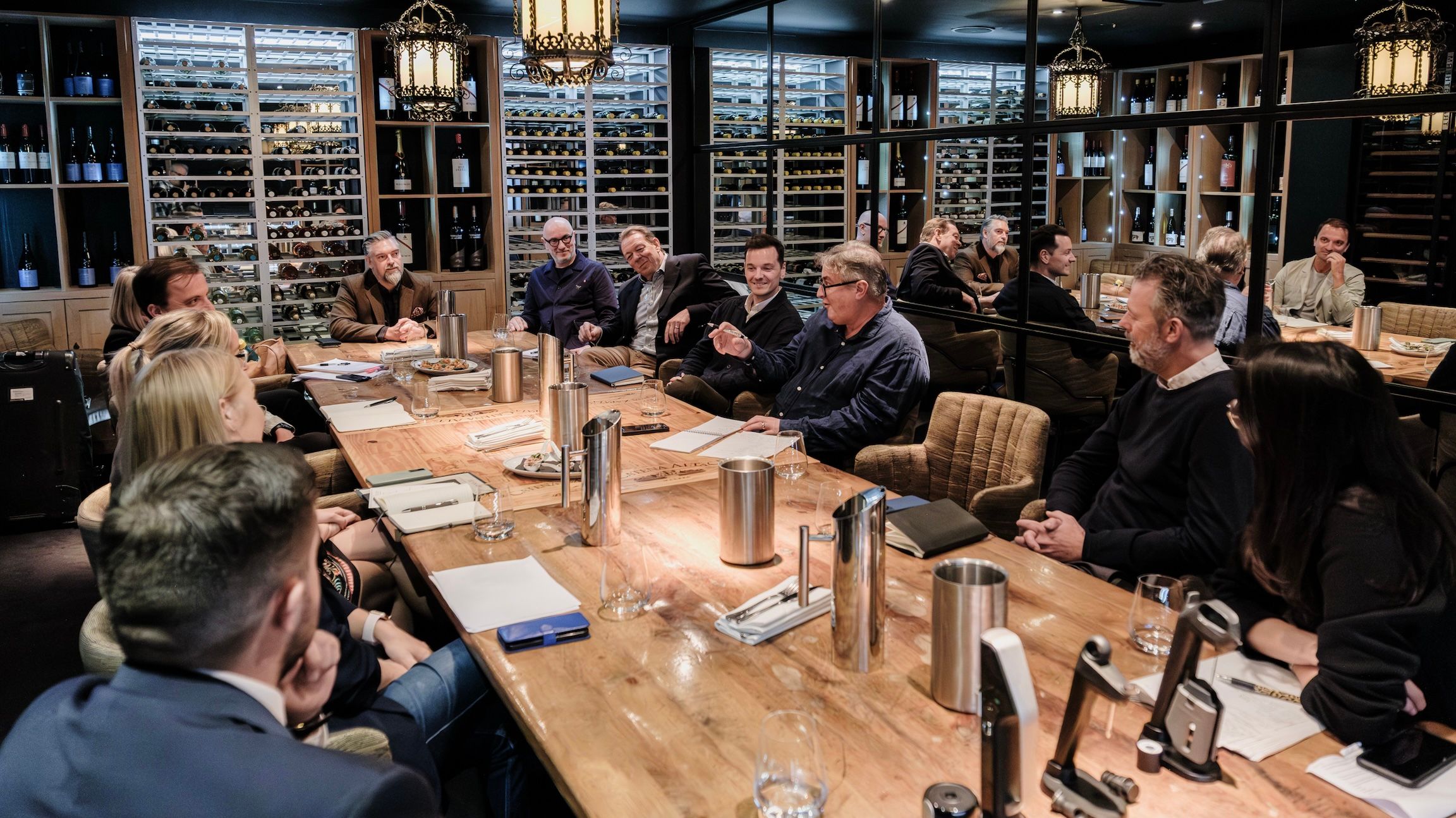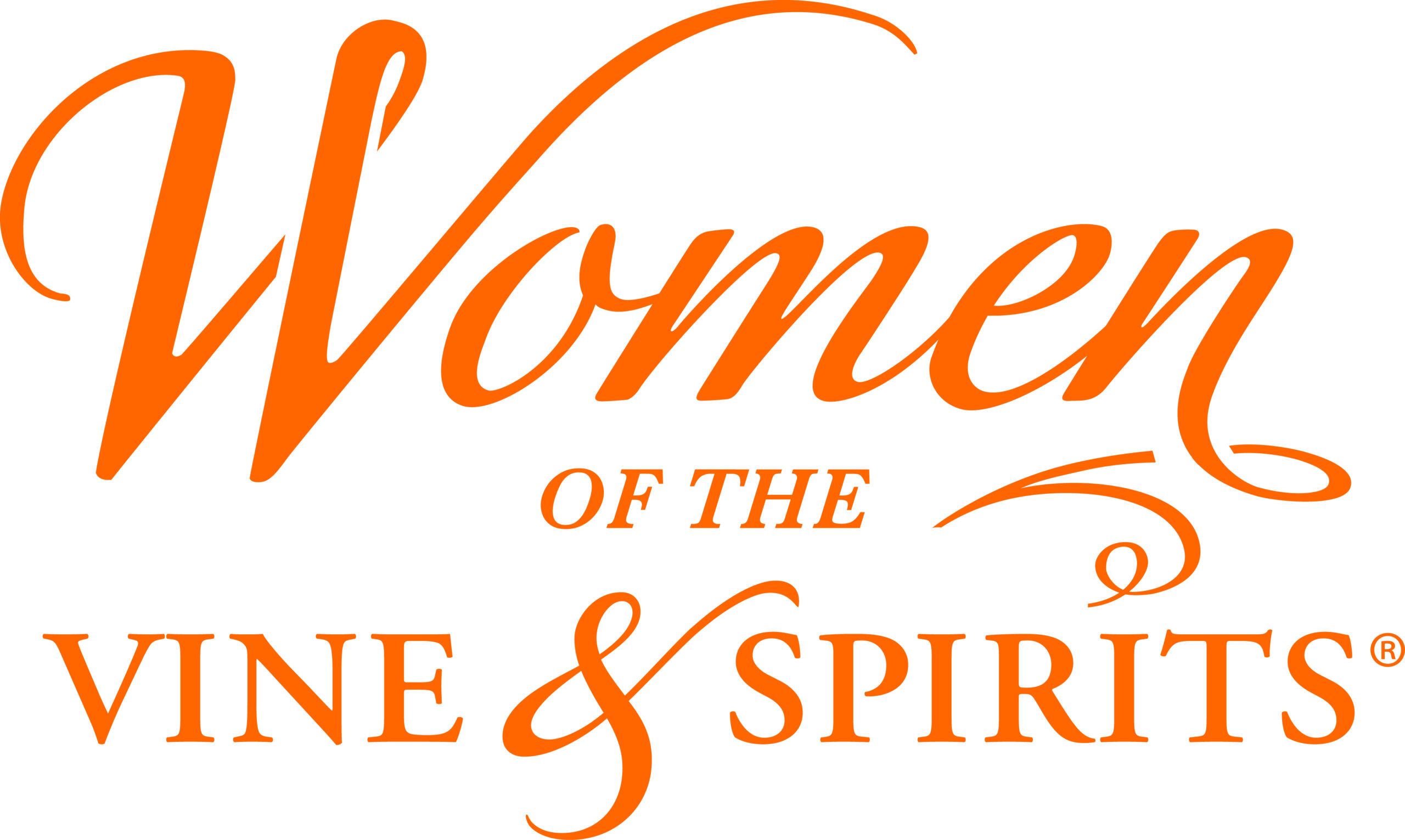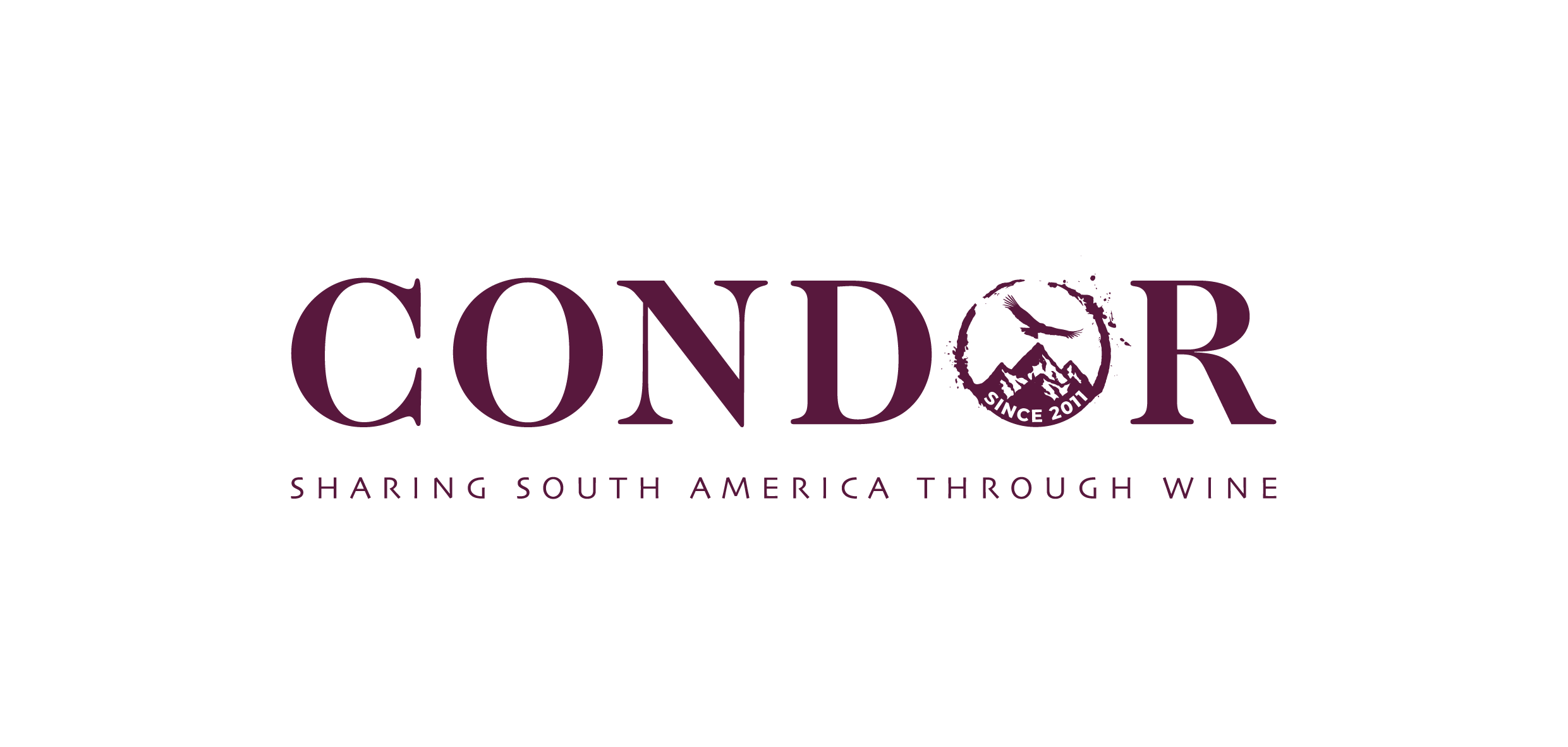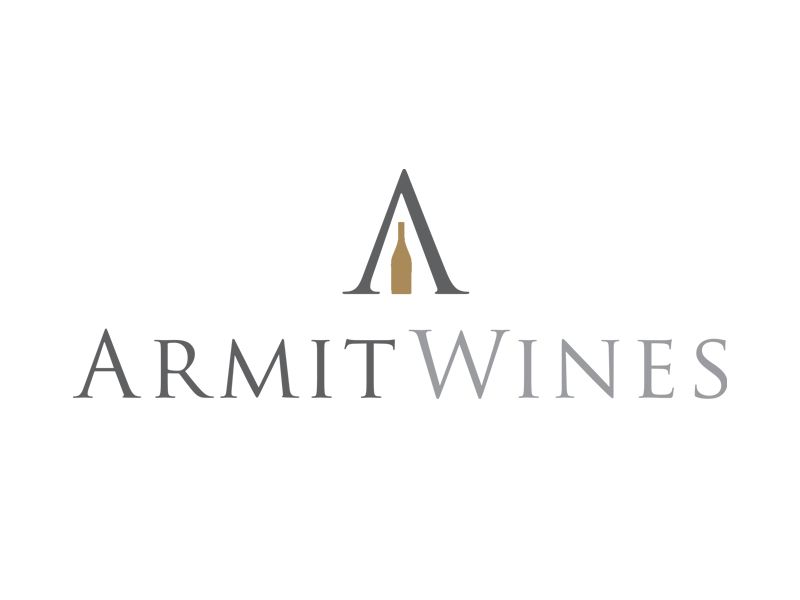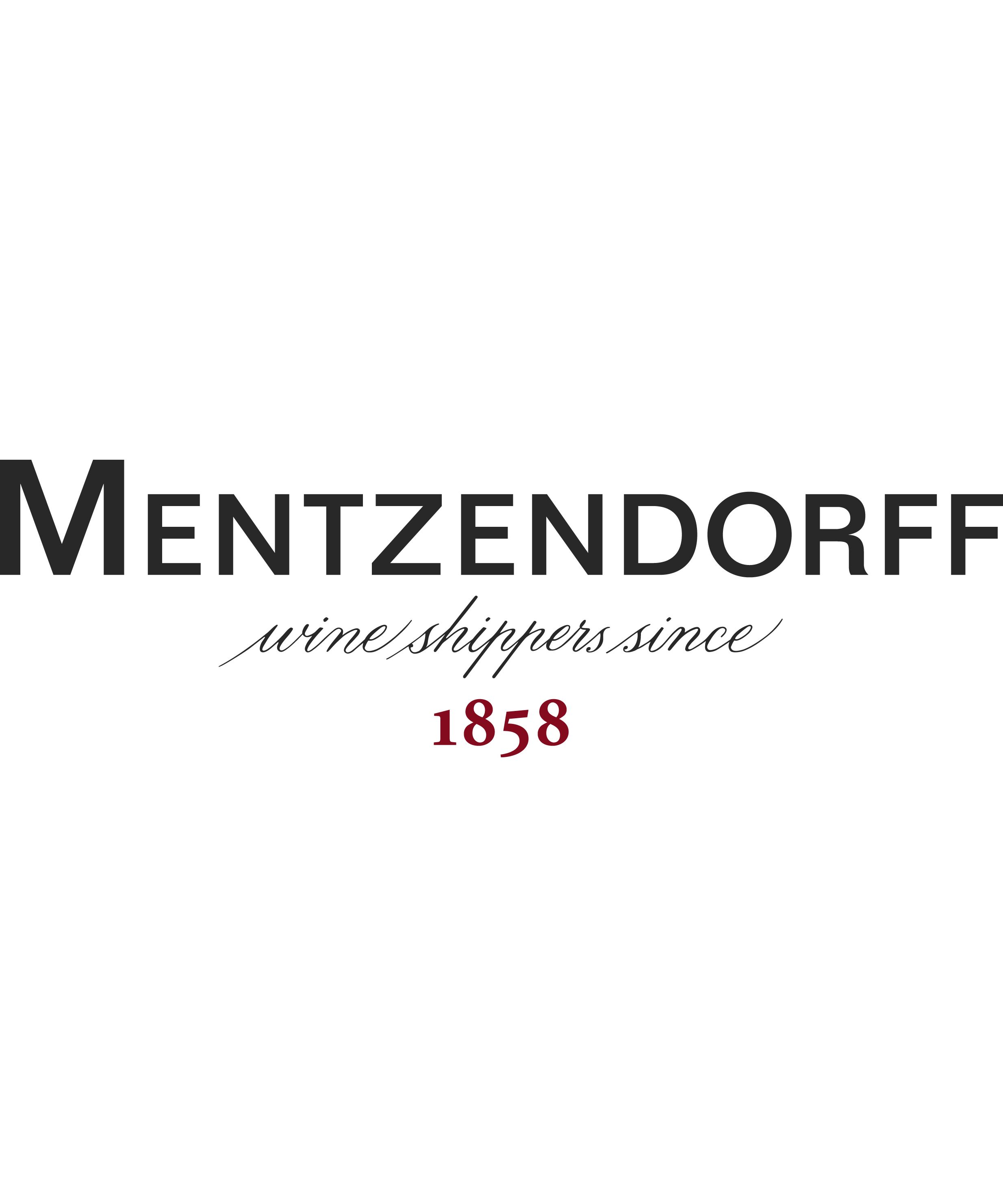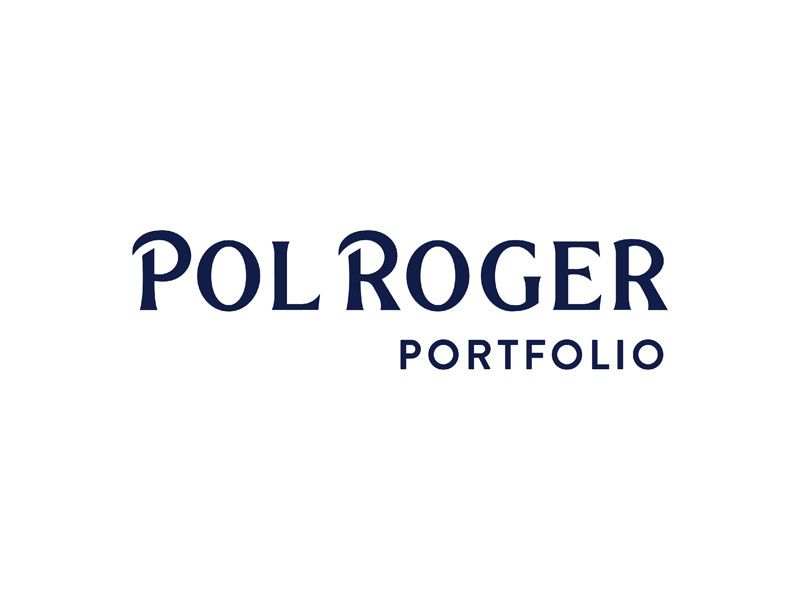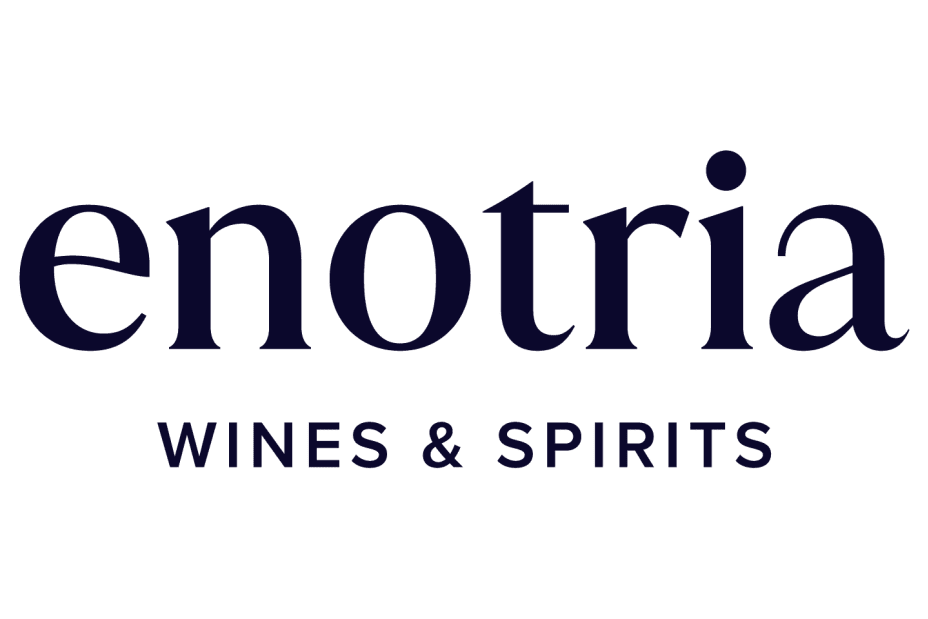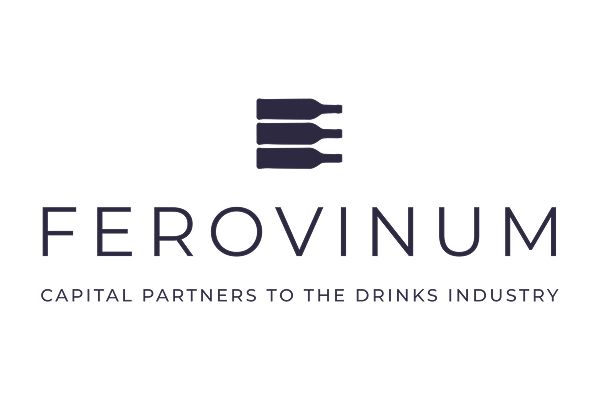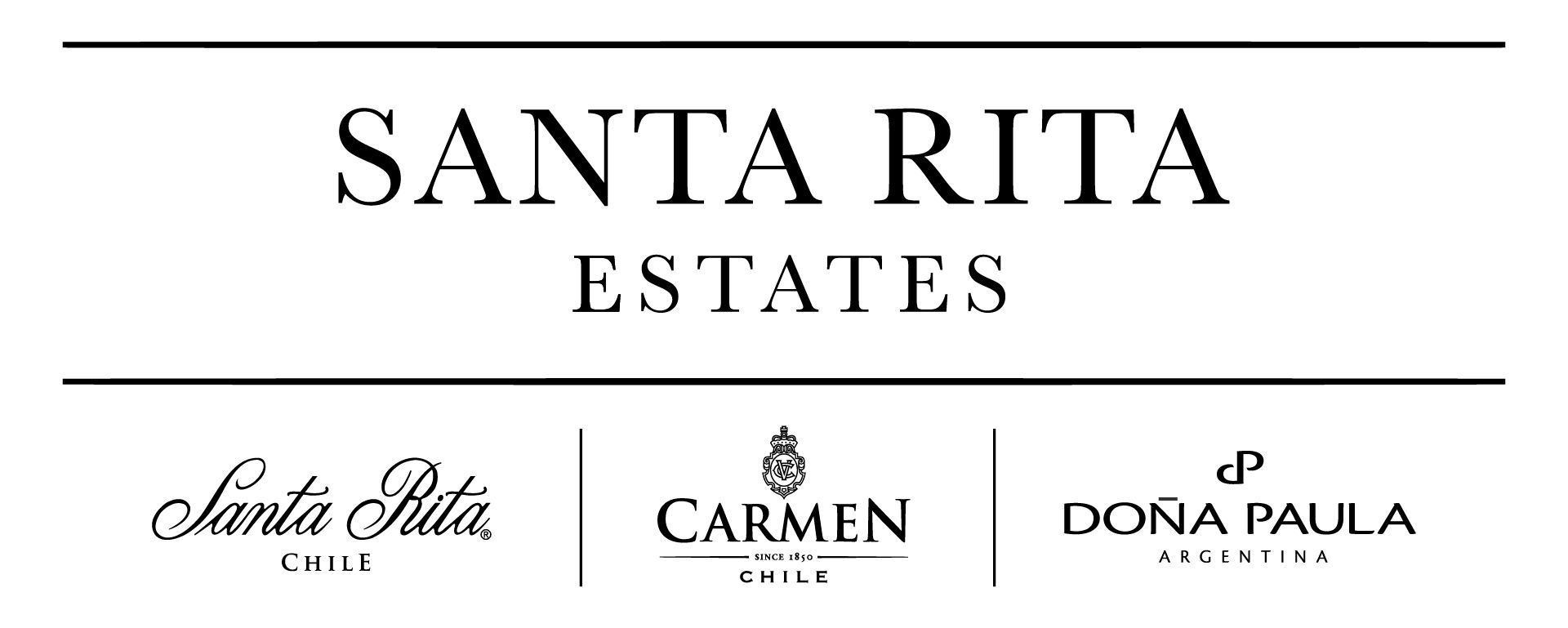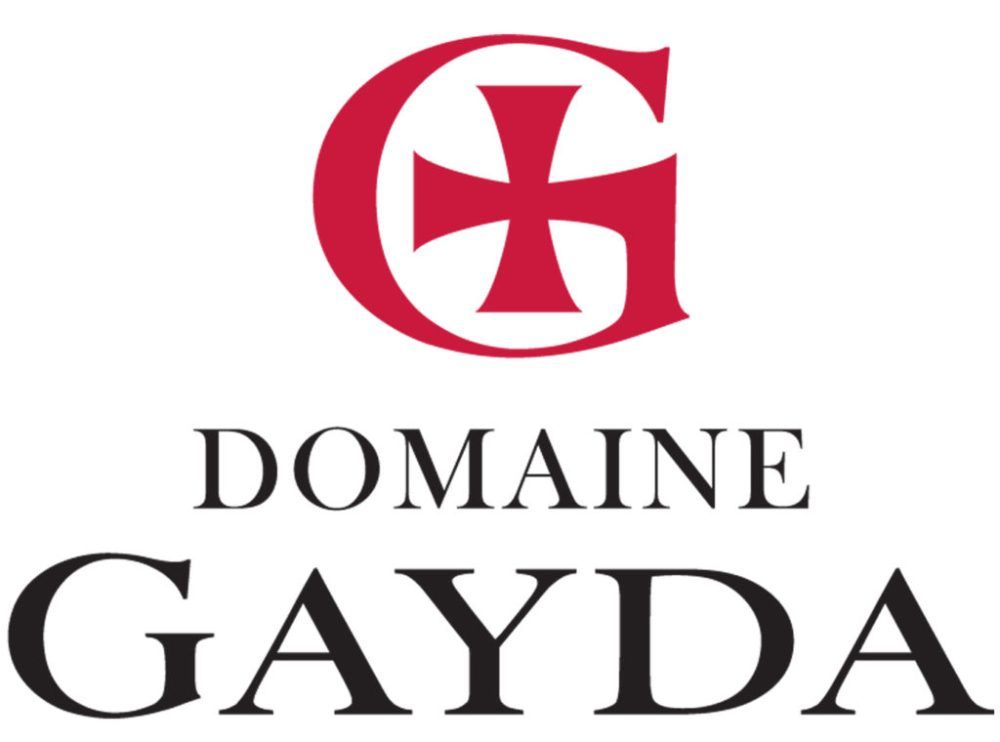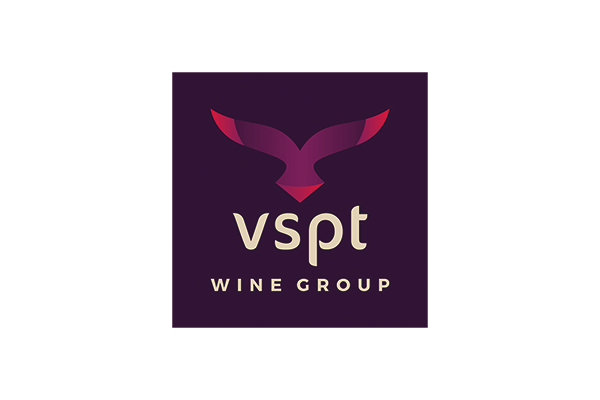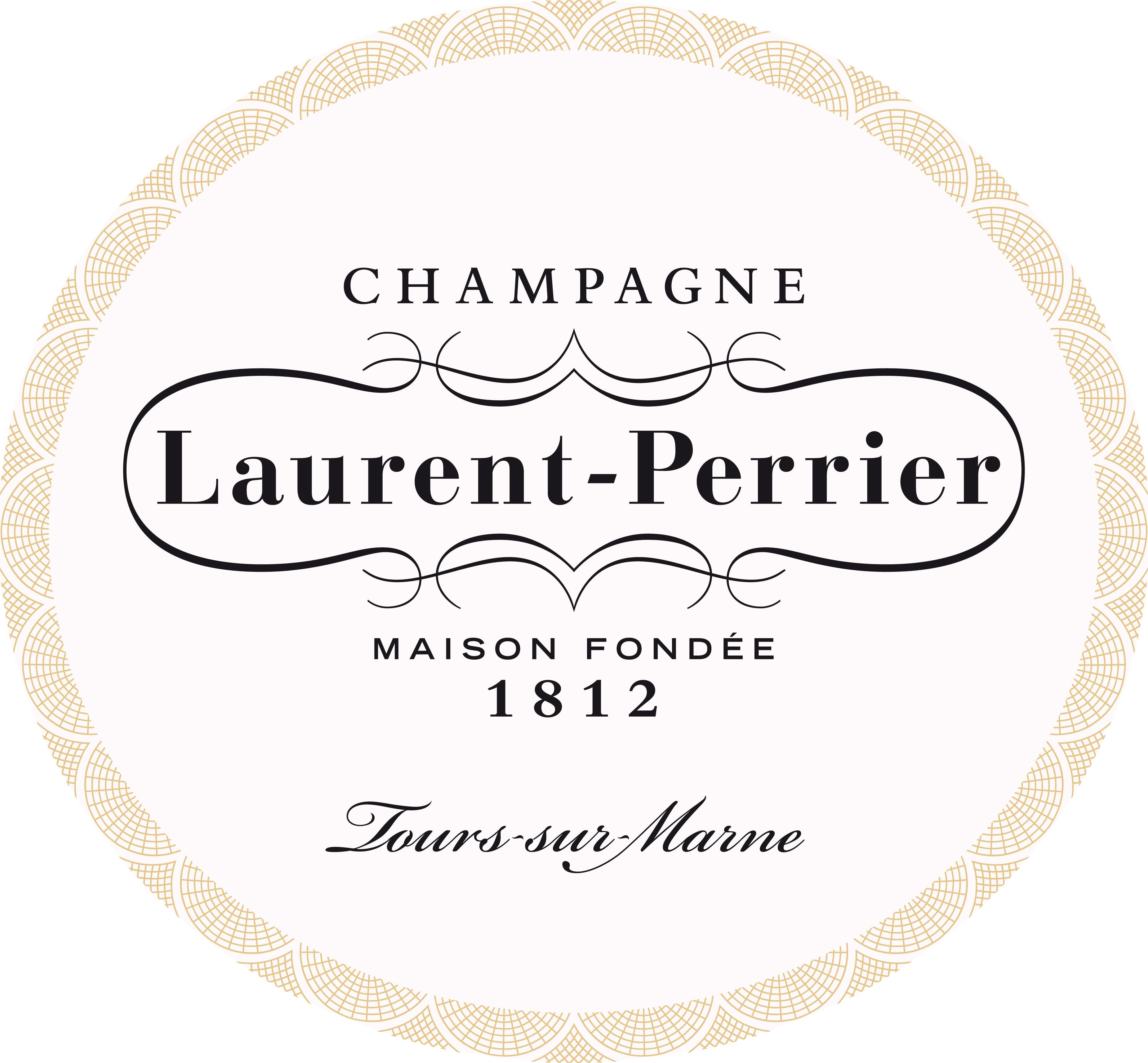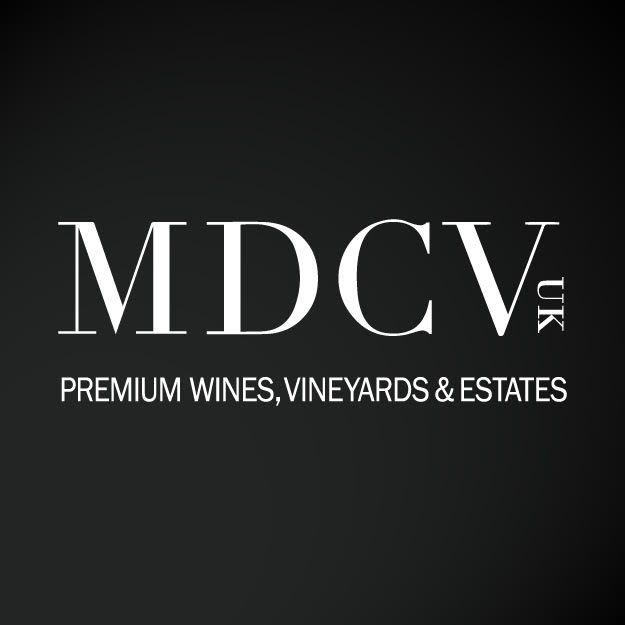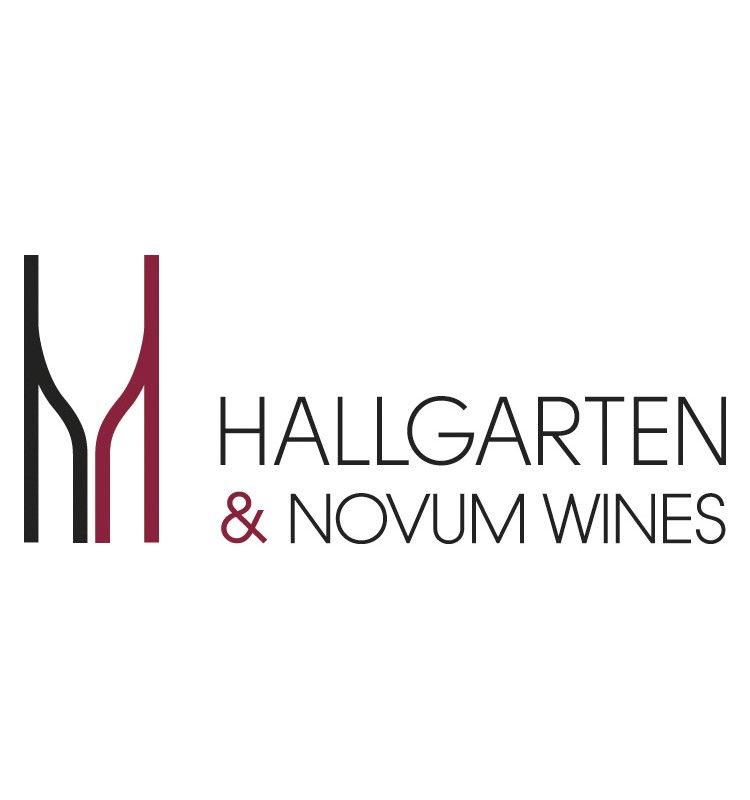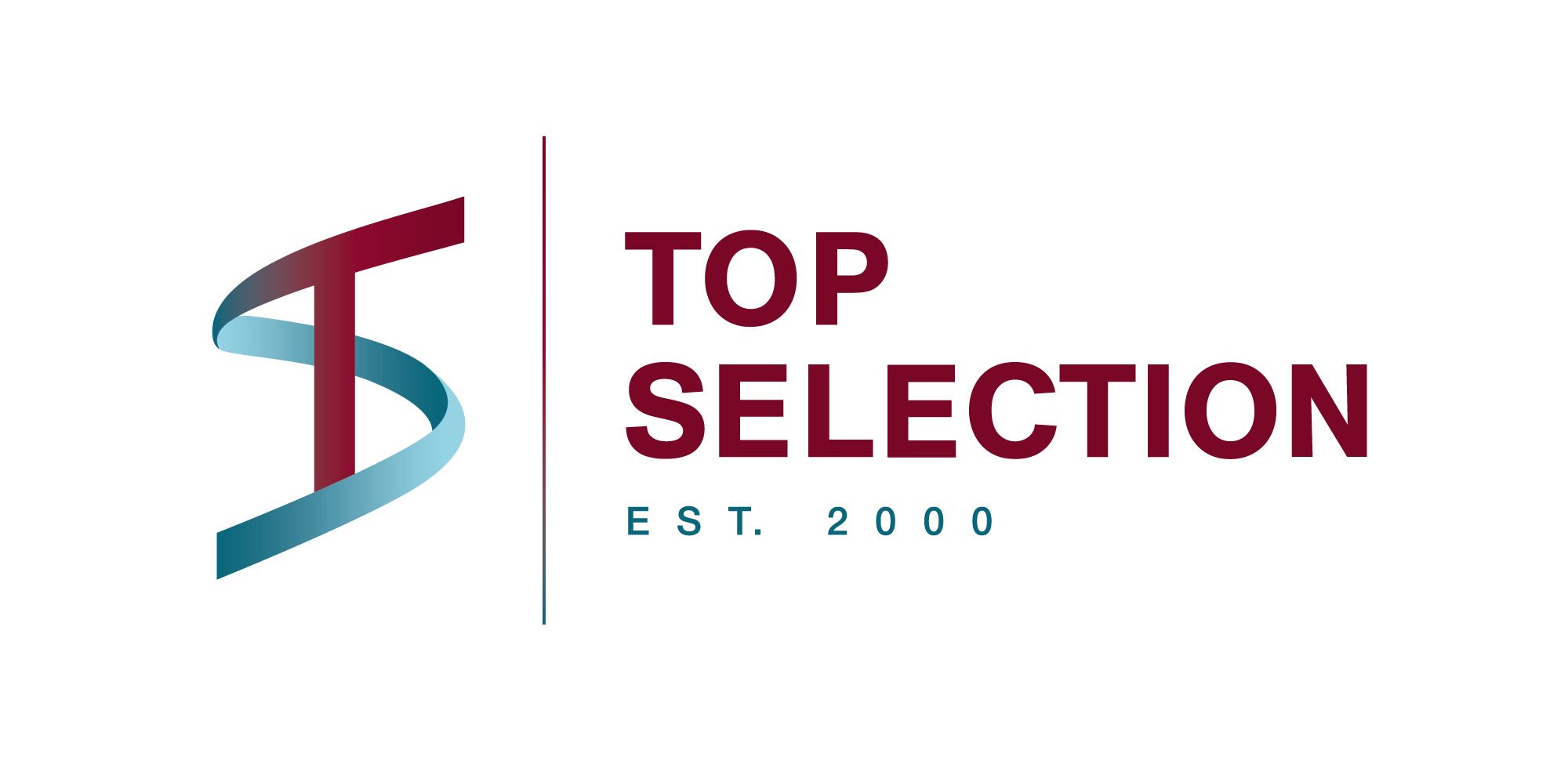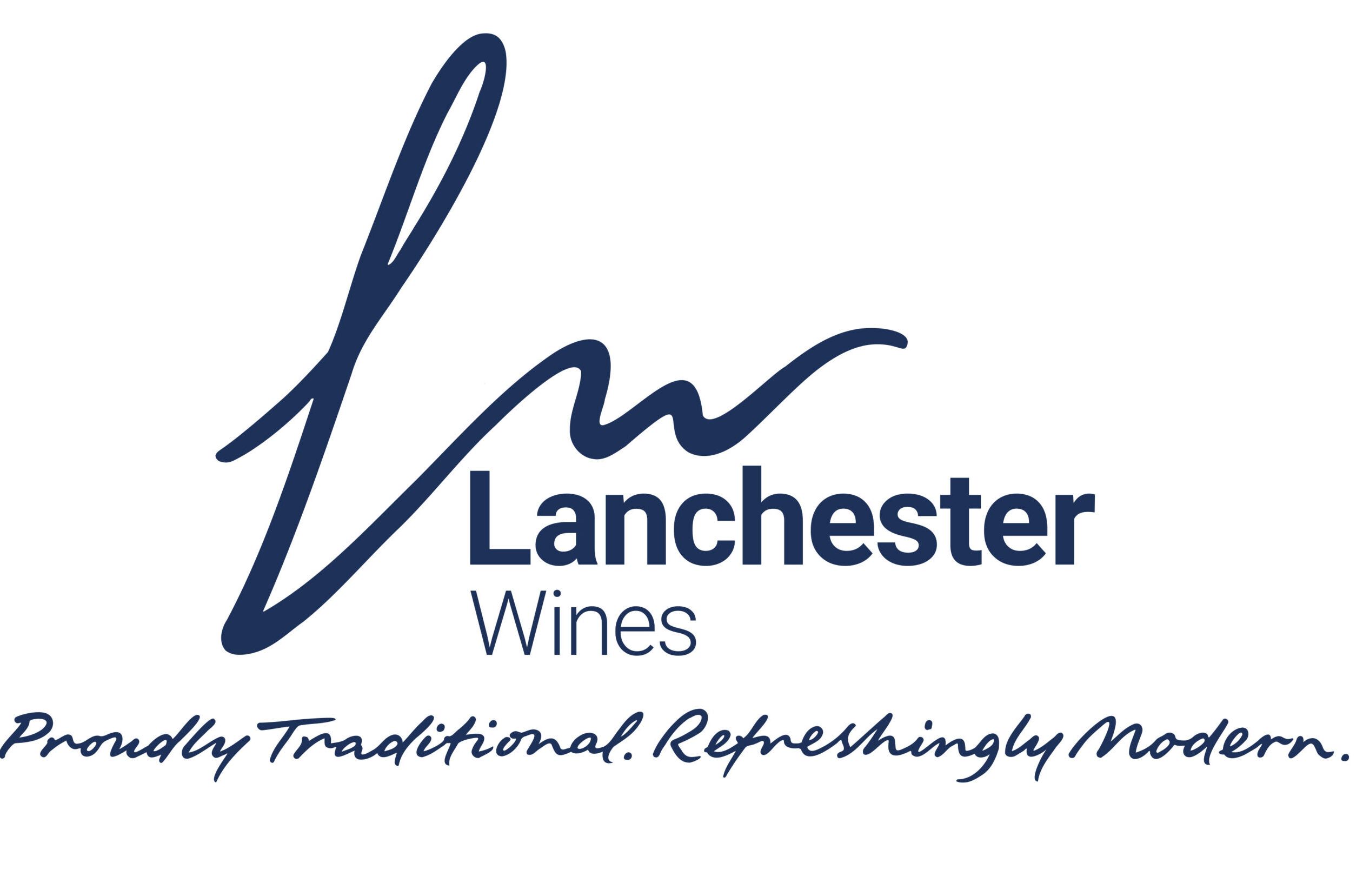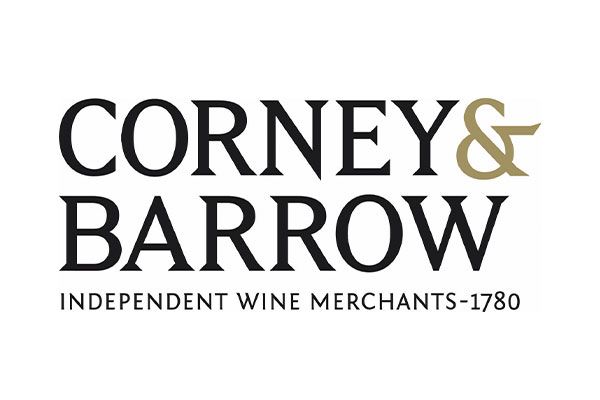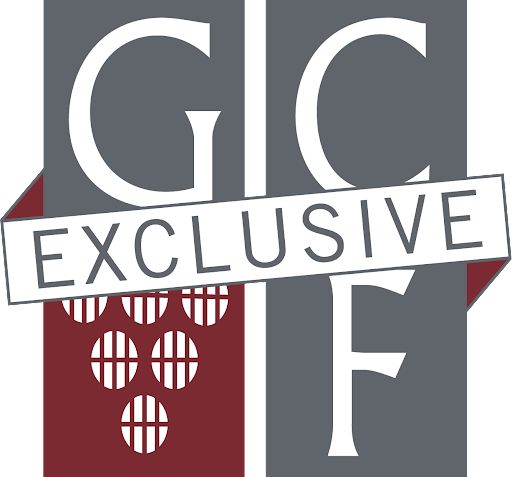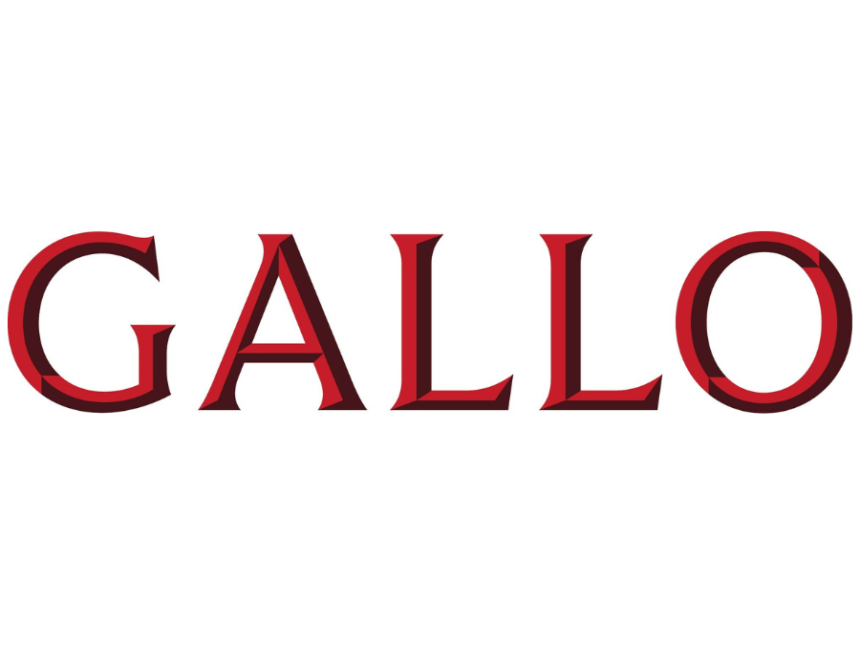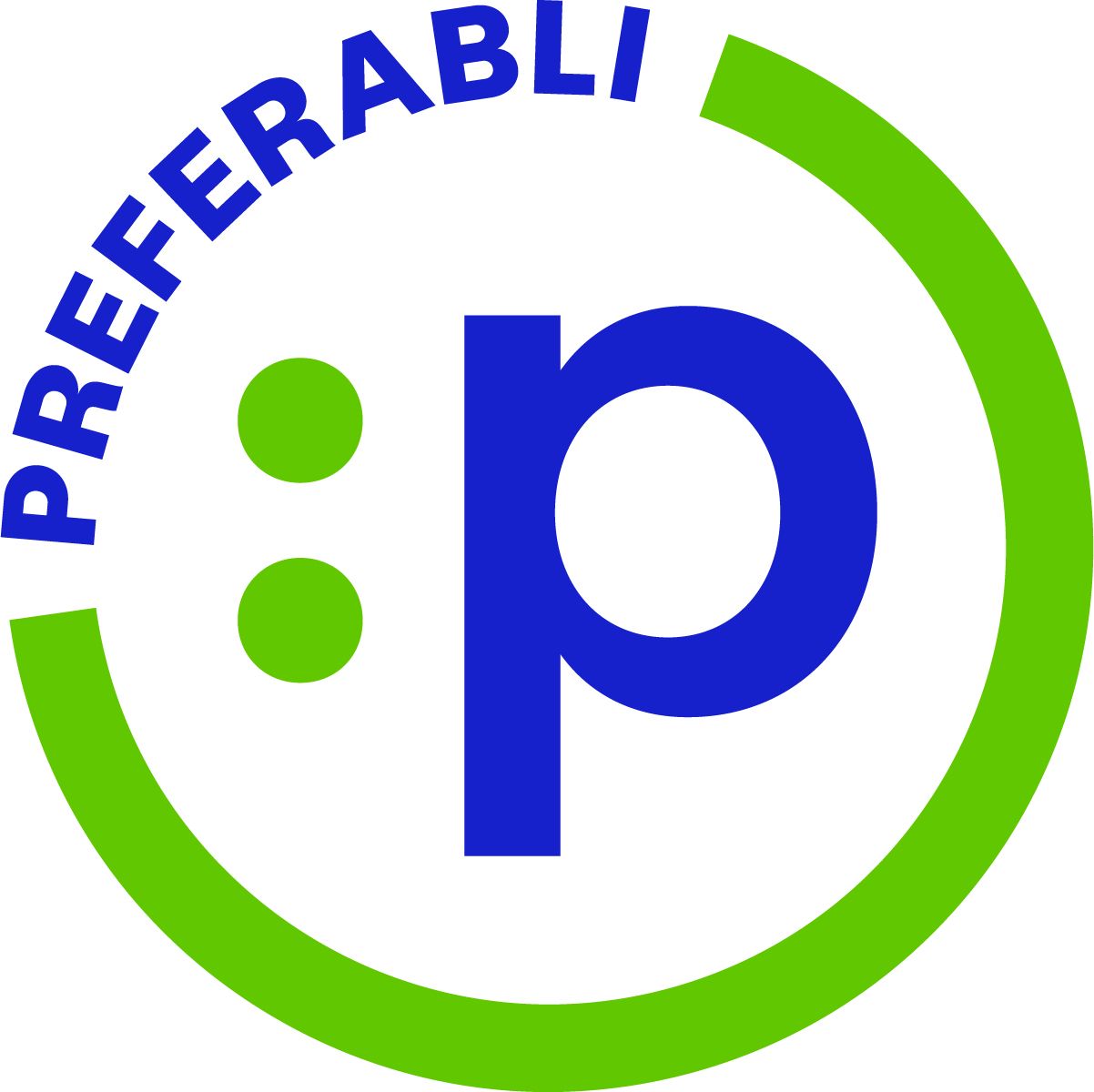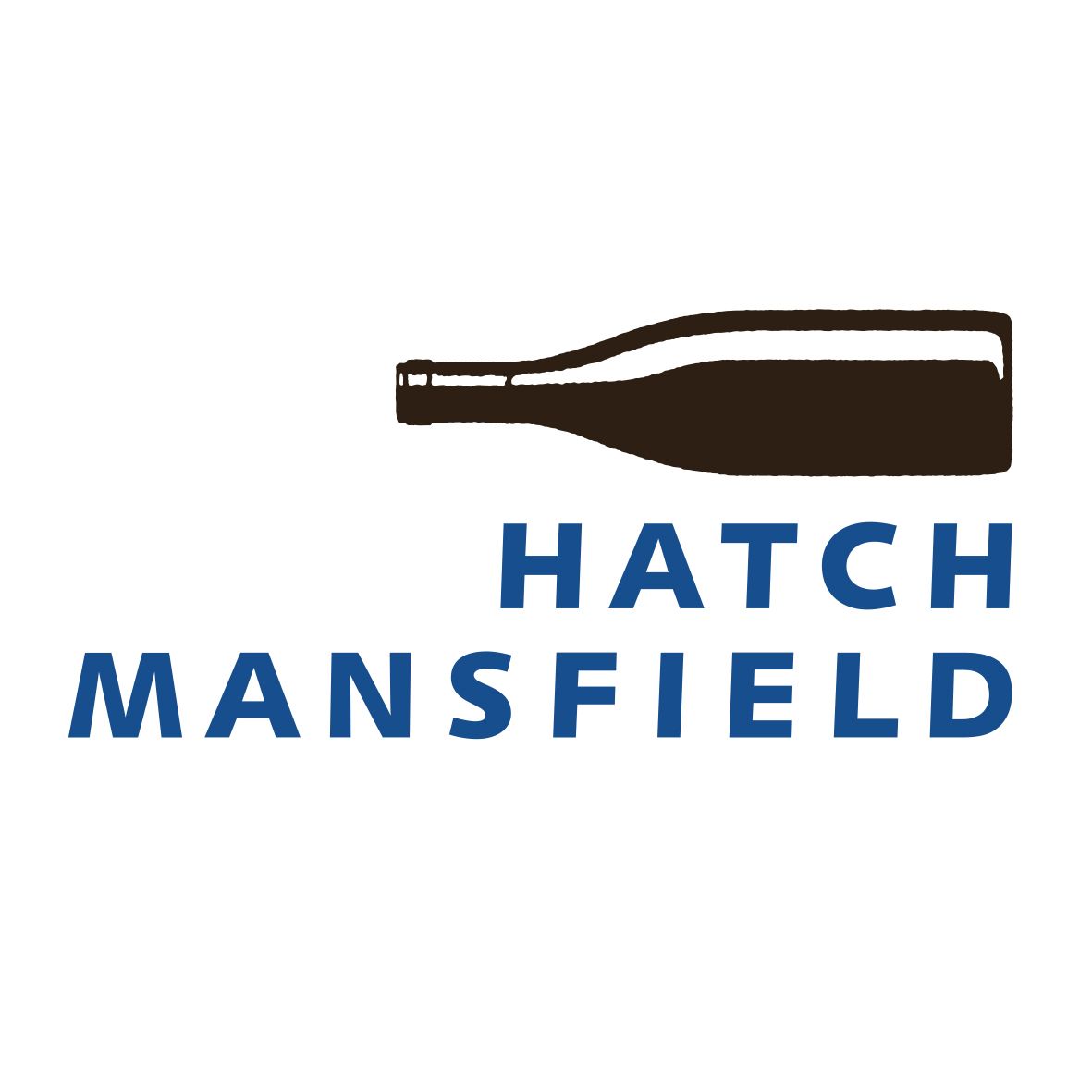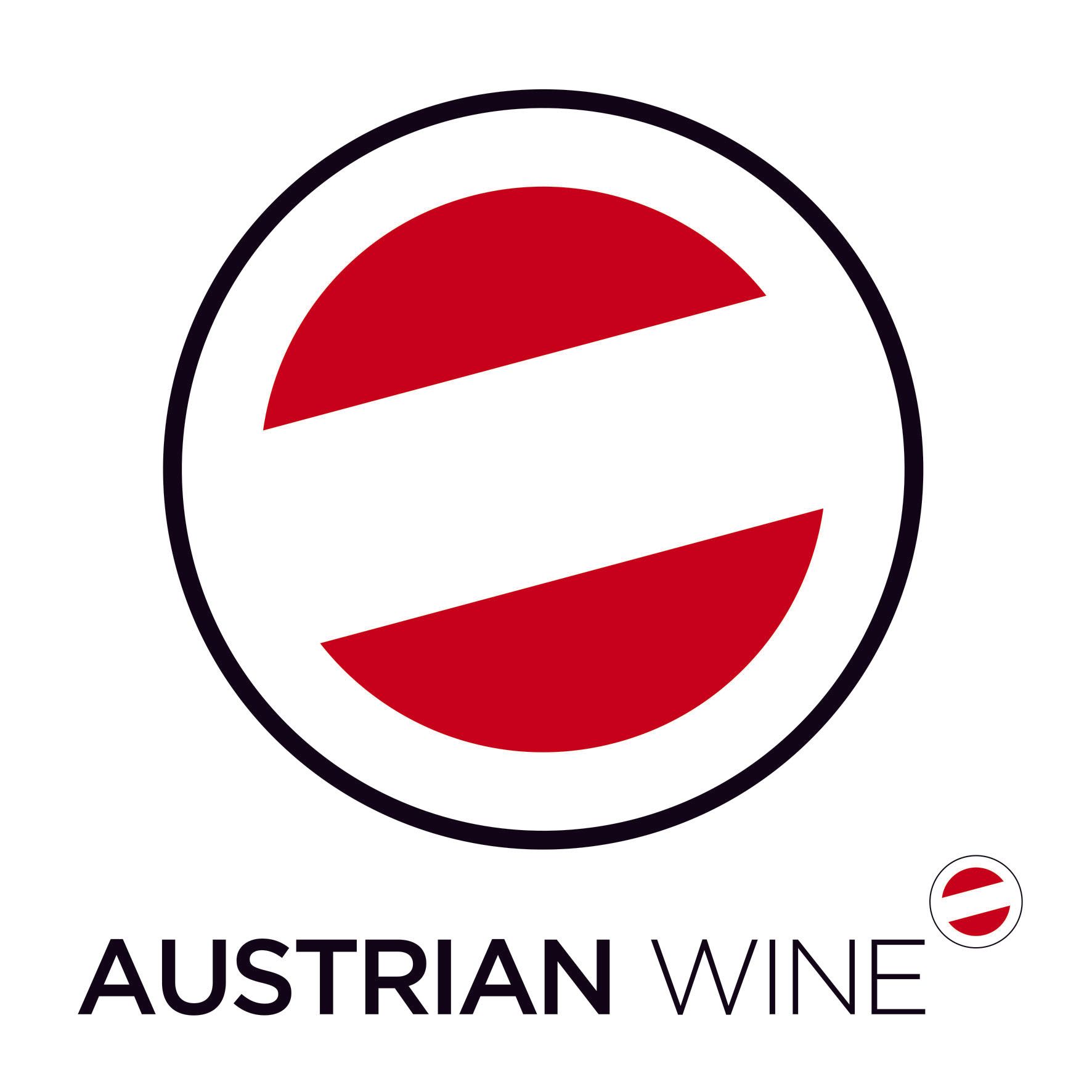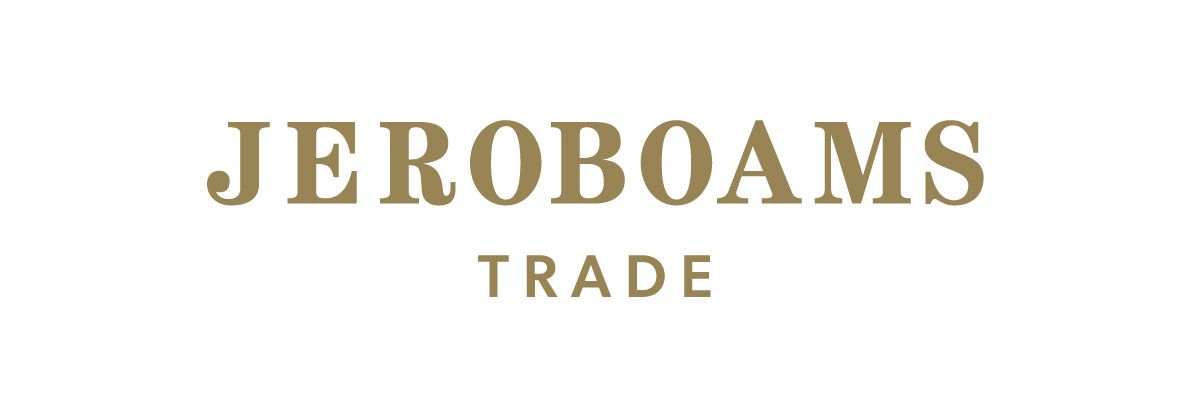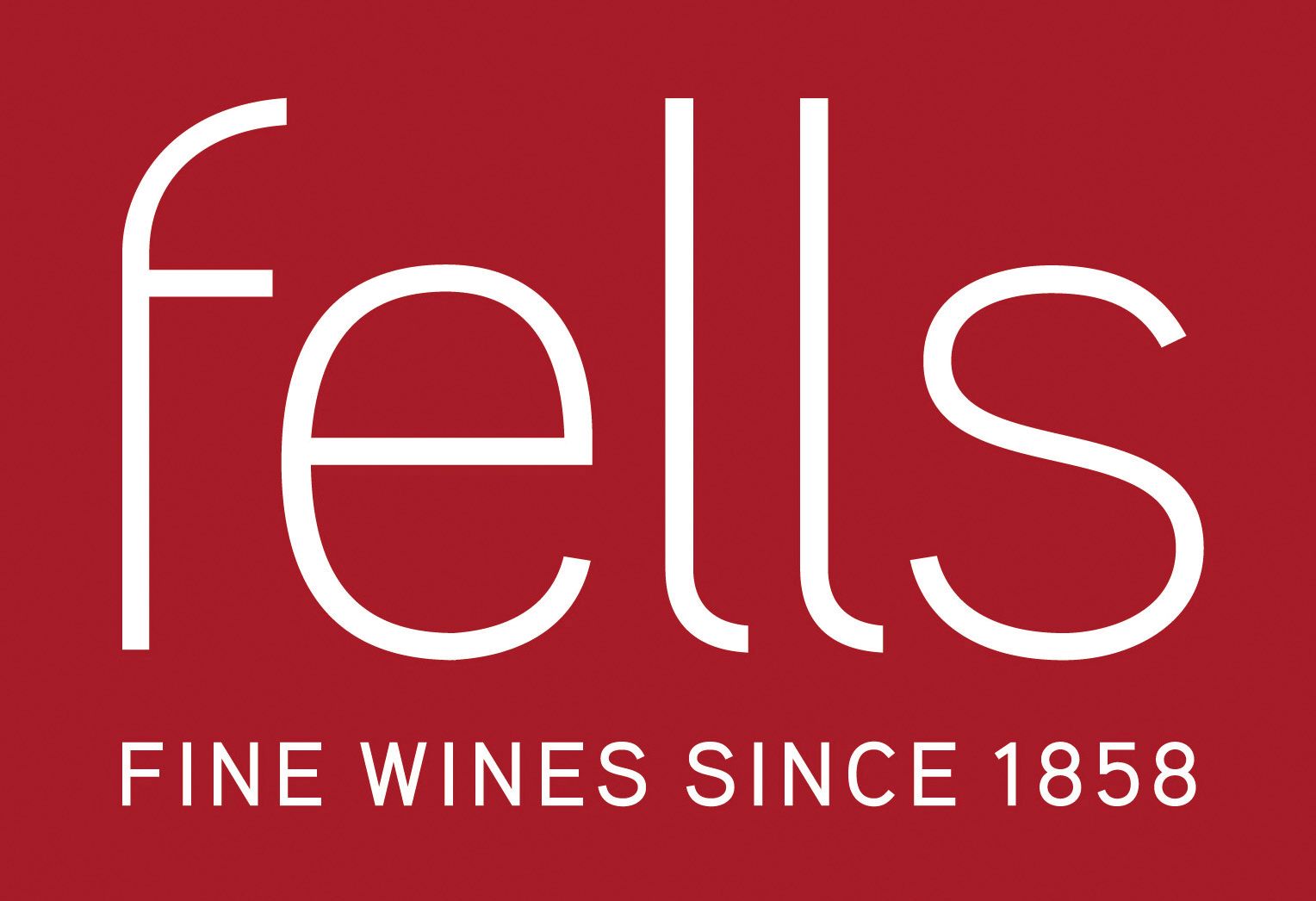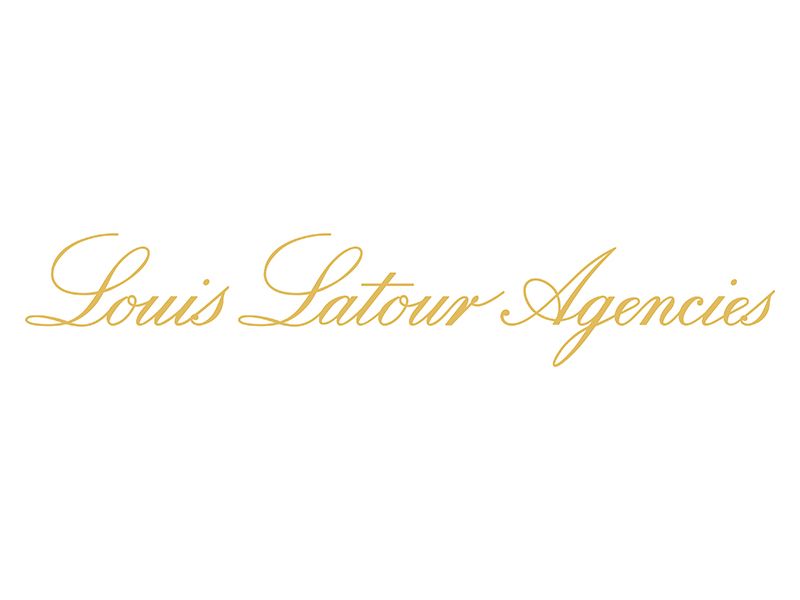Strip back the one thing all premium restaurants, bars and wine retailers have in common and it is their desire to offer their guests the best experience they can through the range of food and wine services they can provide. Key to that offer is the diversity of their wine range with an increasing focus on their wines by the glass selection.
As the pressure on hospitality mounts up by the day with increased employment, supply chain, energy and food costs, the focus has never been greater on what margins and profitably operators can get out of the wines they list. Which is why wines by-the-glass have become such a more important part of what a venue can do.
A combination of word of mouth, industry experience and better advice and support from their suppliers has opened up the by-the-glass opportunity. The most ambitious operators are leading the way with a wide selection of wines all the way up the pricing ladder, offering higher margins and better profits as they go.
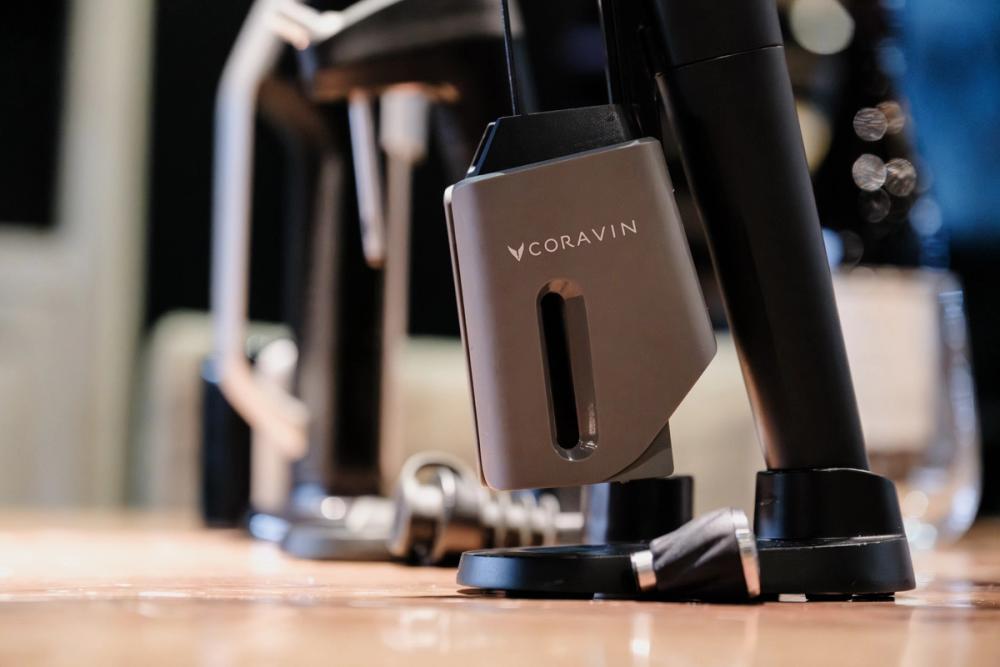
The launch of Coravin has been a "game changer" for how restaurants, bars and pubs can now offer wines by-the-glass to their guests
Fundamental to this growth has been the arrival of Coravin and its range of systems that have turned what restaurants and bars can do by-the-glass on its head (other wine preservations systems are available).
It has crucially opened up wines by-the-glass to the fine wine sector and you would now struggle to find a Michelin star restaurant anywhere in the world that does not have at least one Coravin system for its team.
It is also working increasingly across the premium on-trade to help sommeliers, restaurateurs and wine suppliers, better understand the dynamics of wines by-the-glass and what more it can be doing to help its customers increase sales and profitability.
Last month it released the results of a major consumer study into wines by-the-glass trends and last week it launched its own dedicated website - The Coravin Guide - that profiles restaurants in key cities around the world with extensive by-the-glass programmes (initially in London, Melbourne, Sydney, Milan, The Netherlands and California).
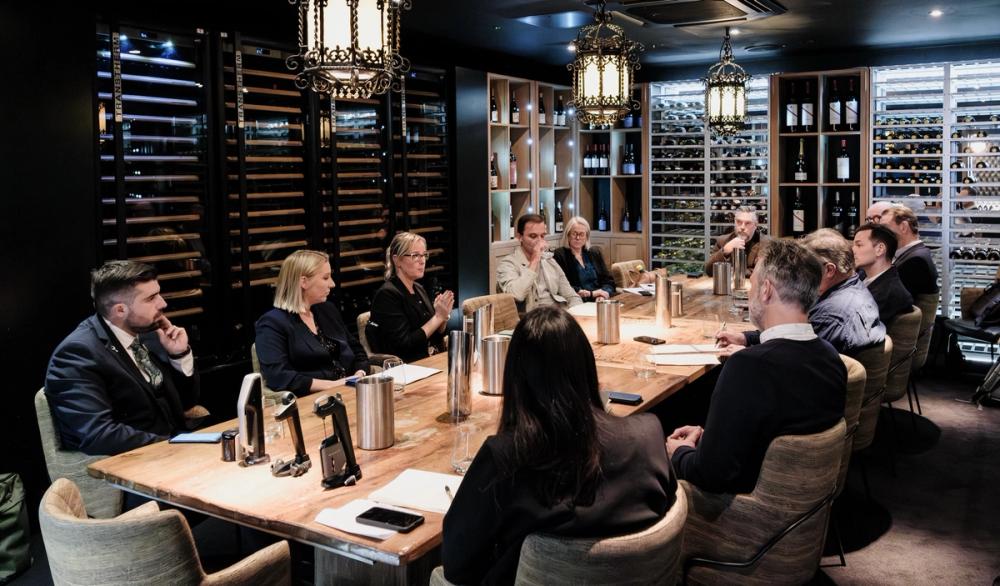
The panel brought together sommeilers, on-trade wine buyers, wine merhants and major importers to assess the role of by-the-glass wines in their businesses
The Buyer also teamed up with Coravin last month to host a major industry debate that brought leading on-trade buyers, sommeliers and importers together to share their wines by-the-glass experiences and what they see as the big opportunities going forward.
A panel that included:
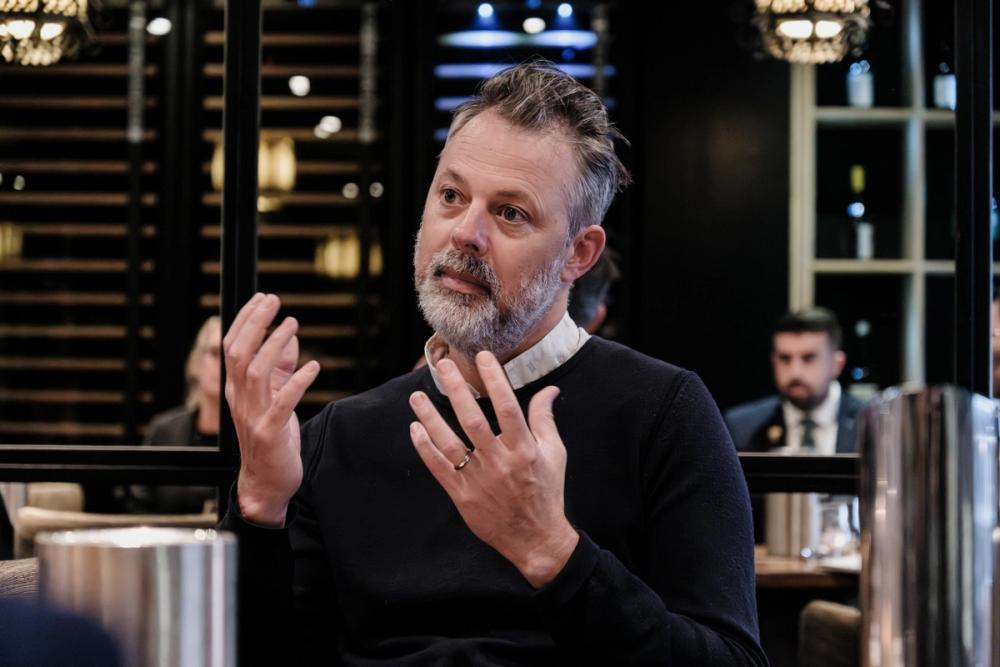
Jeremy Lithgow MW, head of wine at Amathus Drinks.
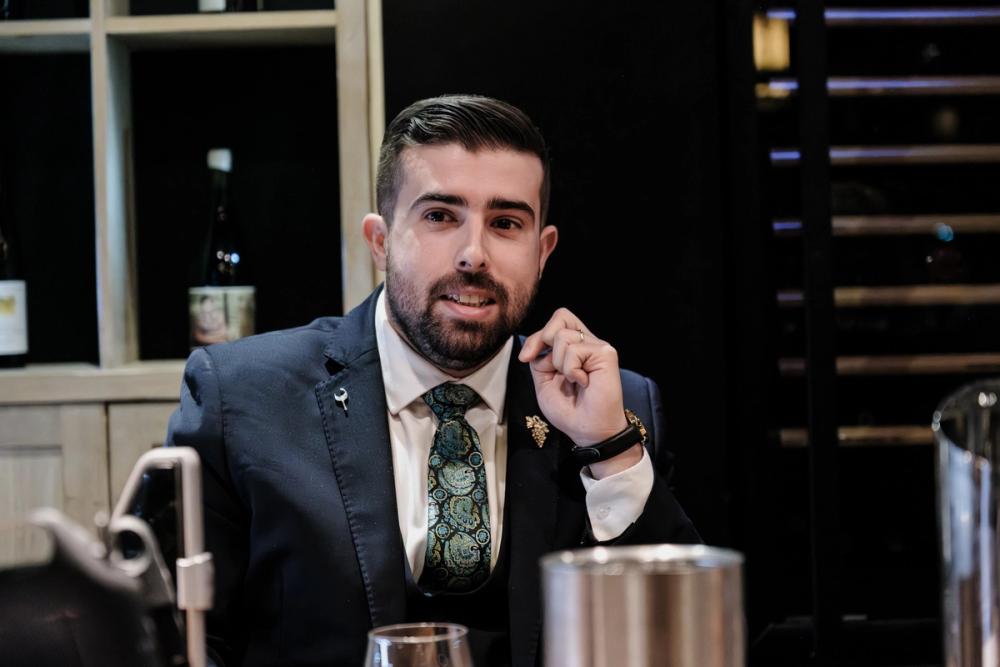
Fabio Monteiro, head sommelier, at 1890 Gordon Ramsay.
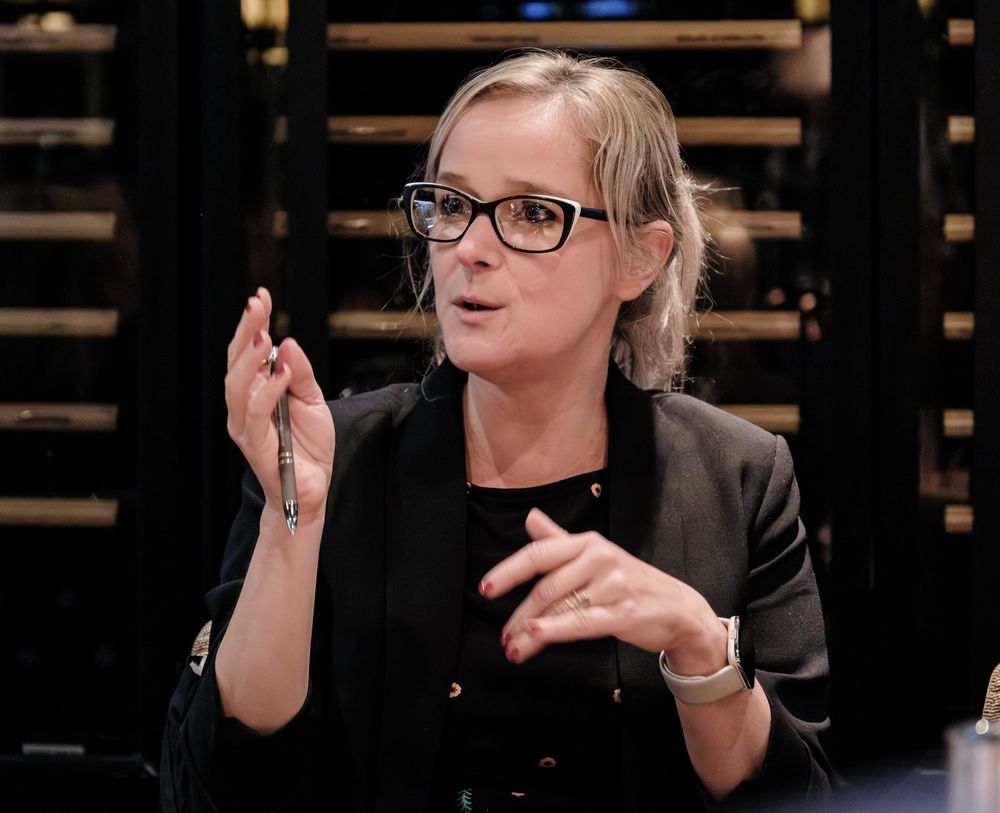
Loredana Gazzato, sales and events manager at The Vintry and Fullers pub group.
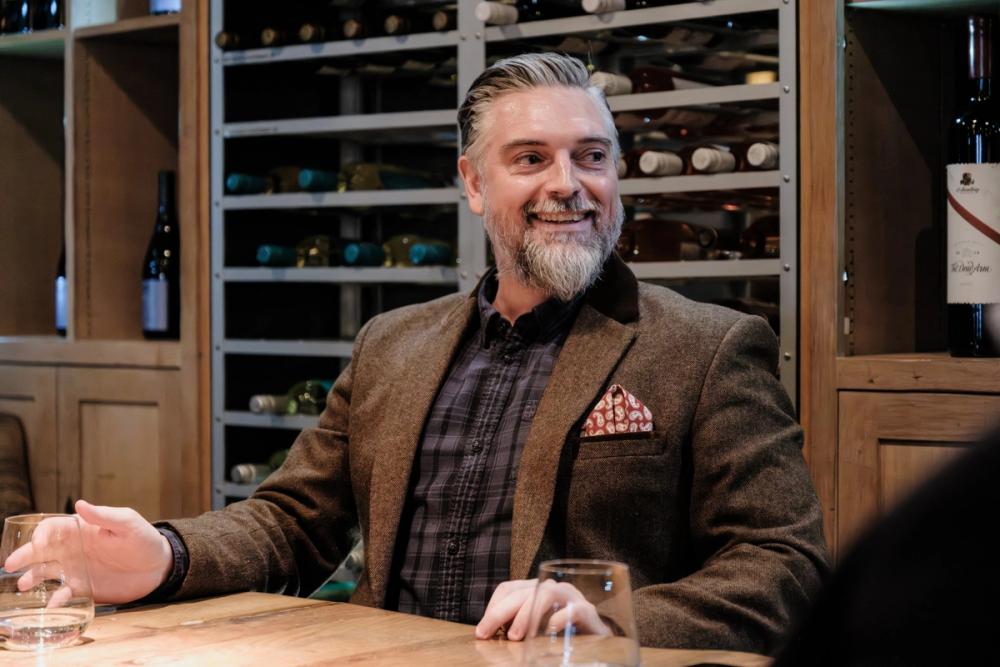
Andrew Clark, head of beers, wines and spirits at, Mitchells & Butlers.
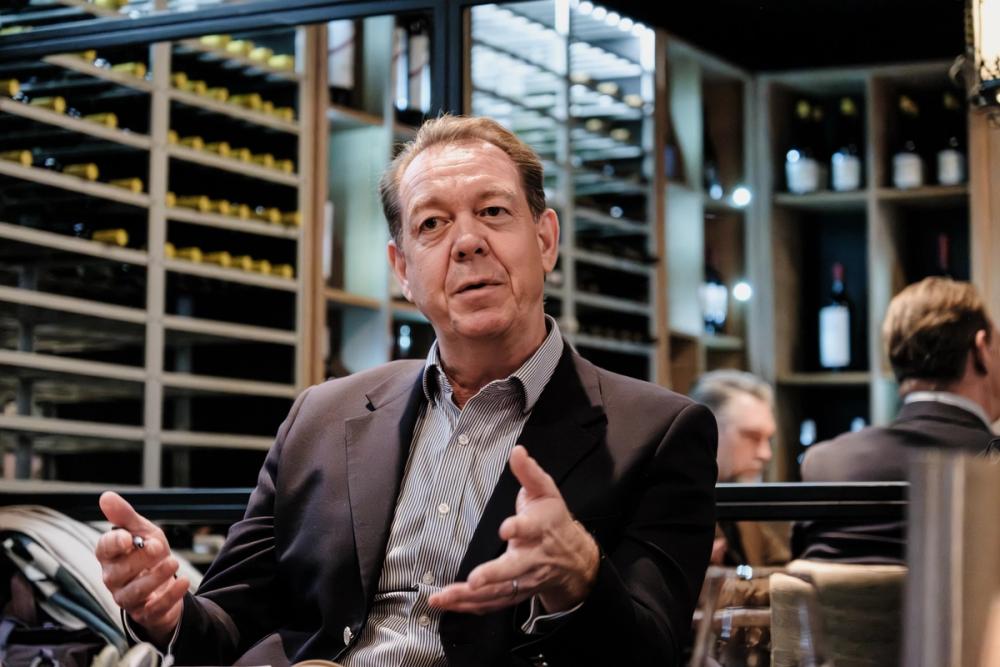
Simon Watson, senior account manager, Jeroboams.
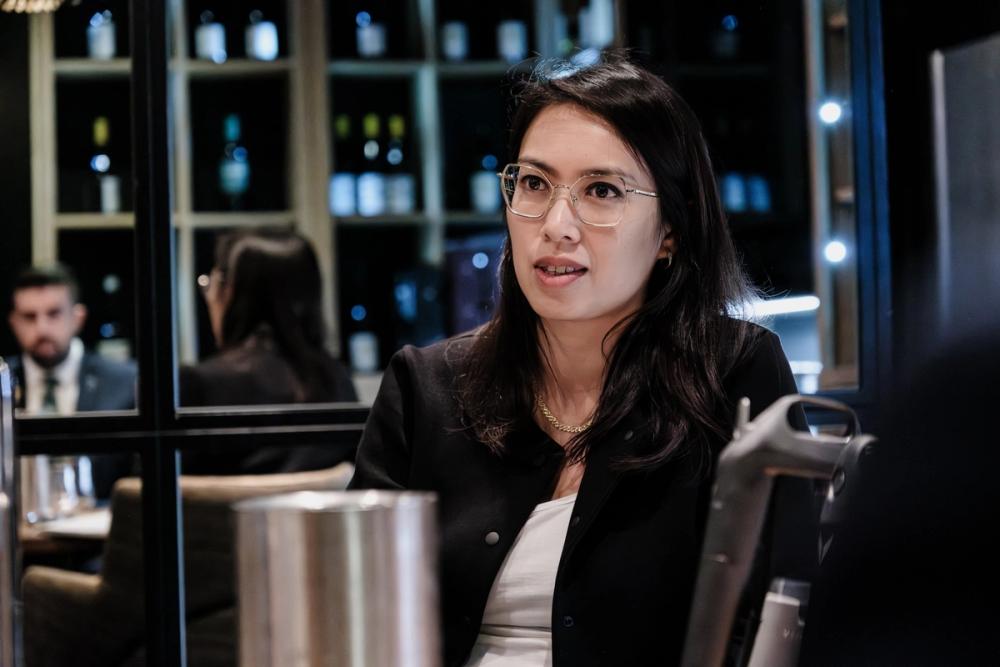
Regine Lee, managing director, Indigo Wine.
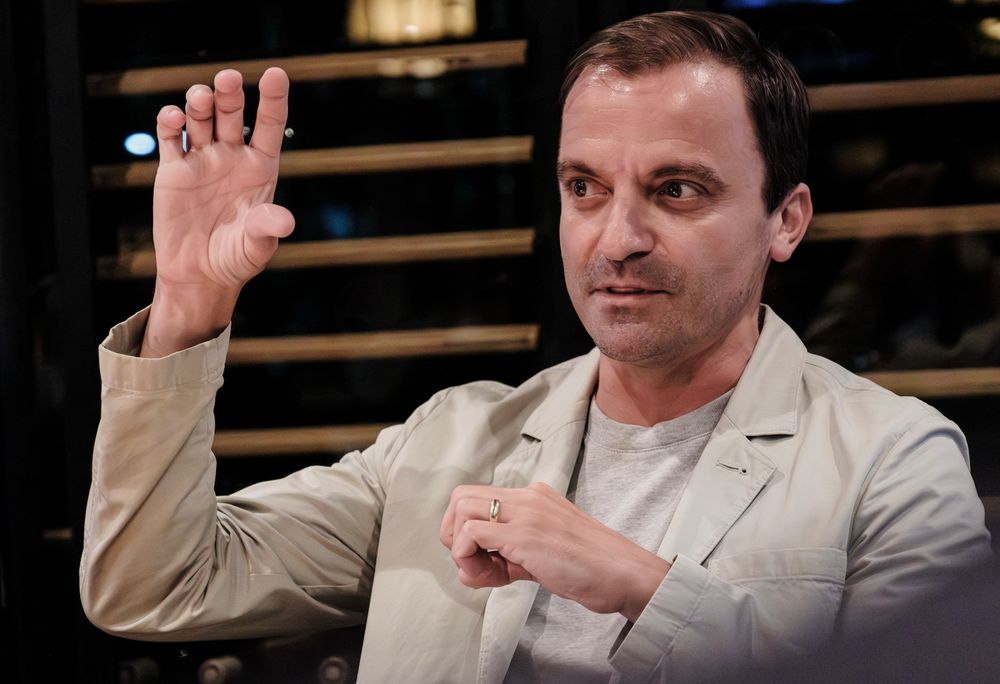
James Stoddart, senior business development manager, Hallgarten &. Novum Wines.
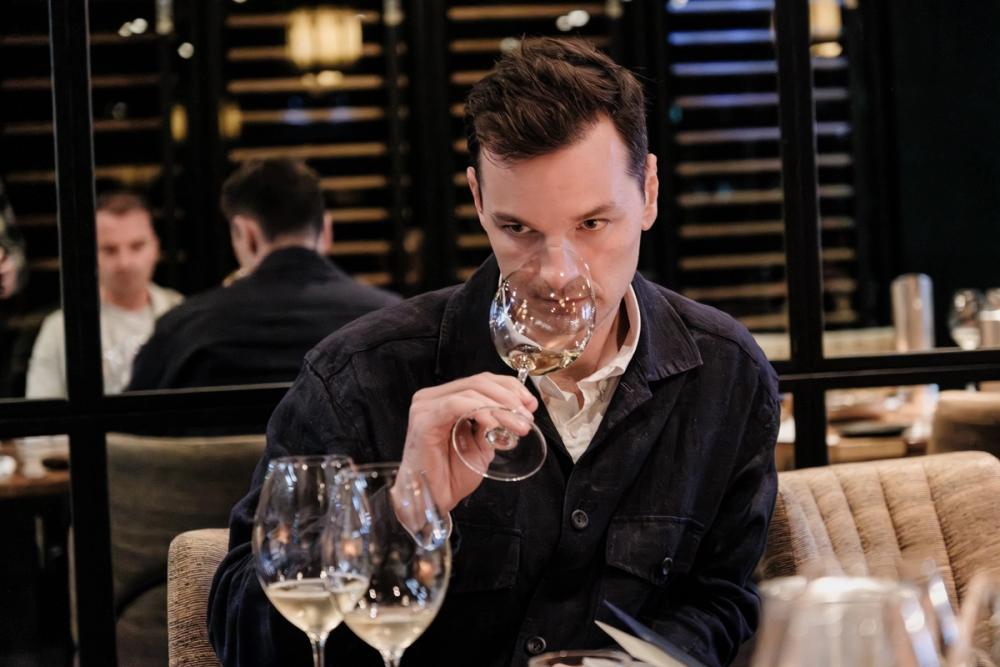
Felipe Carvallo, head of trade sales, Flint Wines.
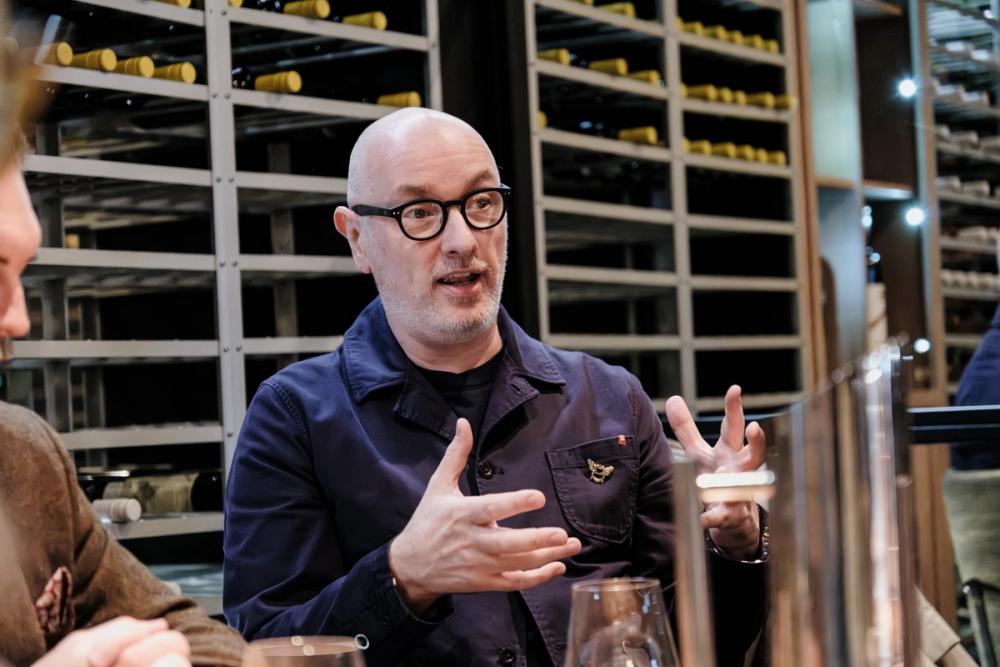
Andrew Ingham, on-trade sales director, Bibendum.
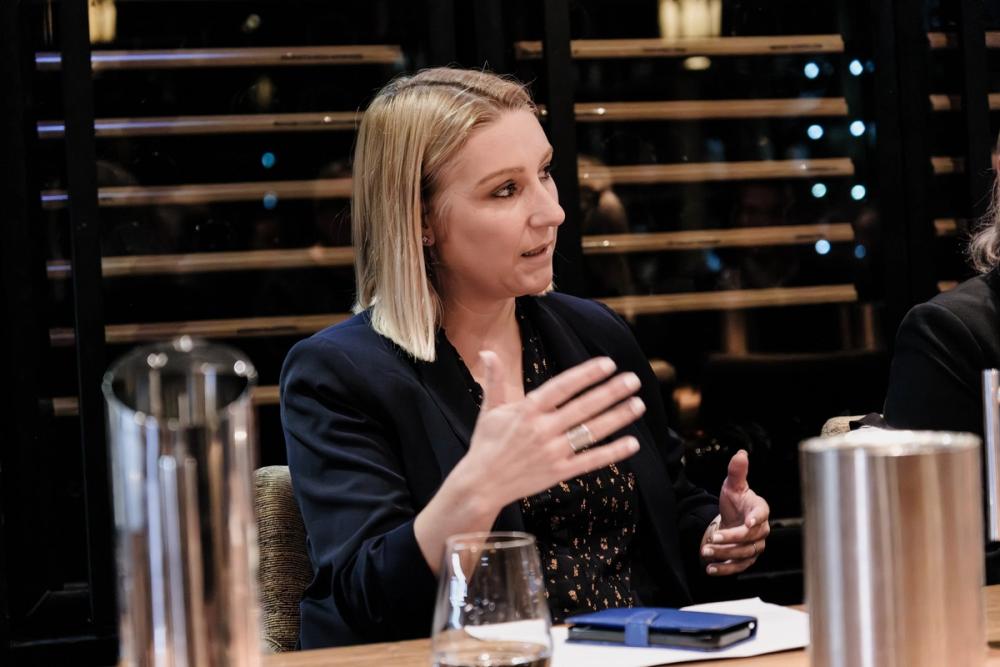
Anne Roque, head of sales UK and Ireland, Coravin.
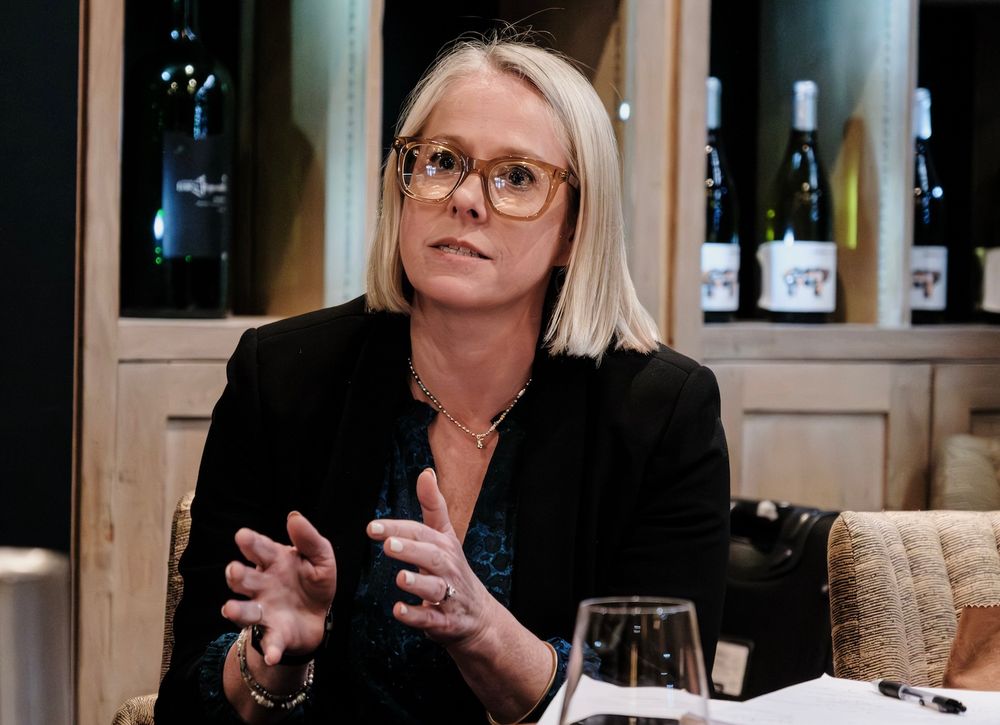
Fleur Puschack, Pushack, global activation manager Coravin.
Setting the scene
We were able to open up the debate by revealing some of the headline figures from a trade survey that The Buyer carried out with Coravin to assess just what the on the ground support for wines by the glass now is.
It found that the majority of respondents ( 70%) had seen wines by the glass sales increase either significantly (24.3%), or a small increase (45.9%). For those that have seen an increase in sales, it’s mostly in the £10-15 or £15-20 per glass price brackets.
When asked what they saw as the reasons for by-the-glass sales increasing the reasons given were:
- Desire to explore and try something different.
- Looking to cut down on their alcohol levels.
- Dining with non-drinkers so need to order a bottle.
- Choosing quality over quantity.
- The price of a bottle of a wine.
Other clear trends that emerged from the research included:
- Offering more flexibility to guests when buying wine be it through offering multiple glass sizes; half glasses; flights of wine to taste.
- Guests want to spend less but still try more.
- They also want to feel special on a night out looking for memorable moments - which is why wine flights are increasingly popular.
- By-the-glass also resonates well with Gen Z’s values of variety, quality, and sustainability.
The findings certainly resonated with the panel who were each able to share just how important the category has become in their businesses.
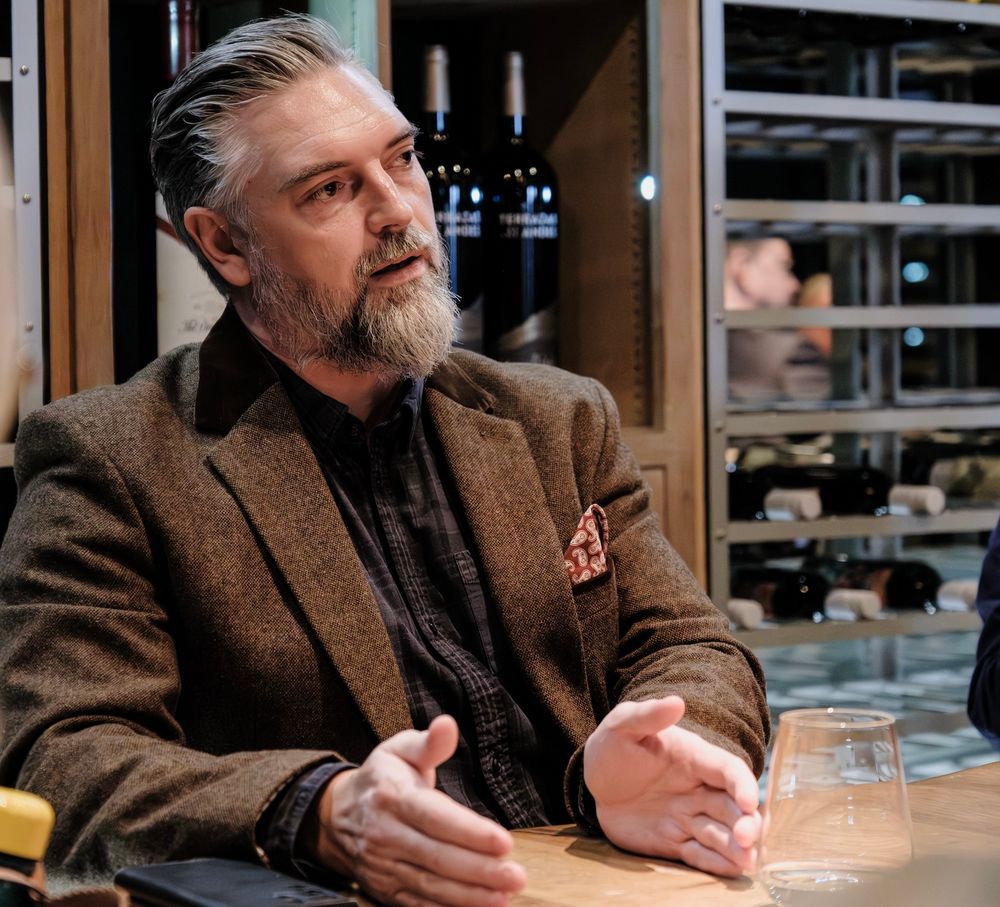
Andrew Clark says there has been a big increase in by-the-glass sales across the Mitchells & Butlers different formats in the last two years in particular
The pendulum has certainly switched at Mitchells & Butlers over the last two years, says Andrew Clark. Whilst there was always a need to have a selection of wines by-the-glass in all its venues, the big difference now is that each of its business formats have now developed their own clear need of what type of wines by-the-glass will work best in their outlets.
With its most premium food-led pubs now boasting an extensive, ambitious range of wines with price points between £10 and £20. It is also now working with Coravin to develop those opportunities.
“Coravin has become an important part of our business,” he says, particularly as it is developing those more premium brand formats.
It is a similar story at the Fullers pub group which has also developed different wines by-the-glass ranges for its different trading formats. Loredana Gazzato from Fullers’ The Vinrtry says it is using Coravin in 40 of its venues and it has really helped “drive” interest in wine. It has also helped with staff training to give them the confidence to go out and sell more interesting and diverse wines.
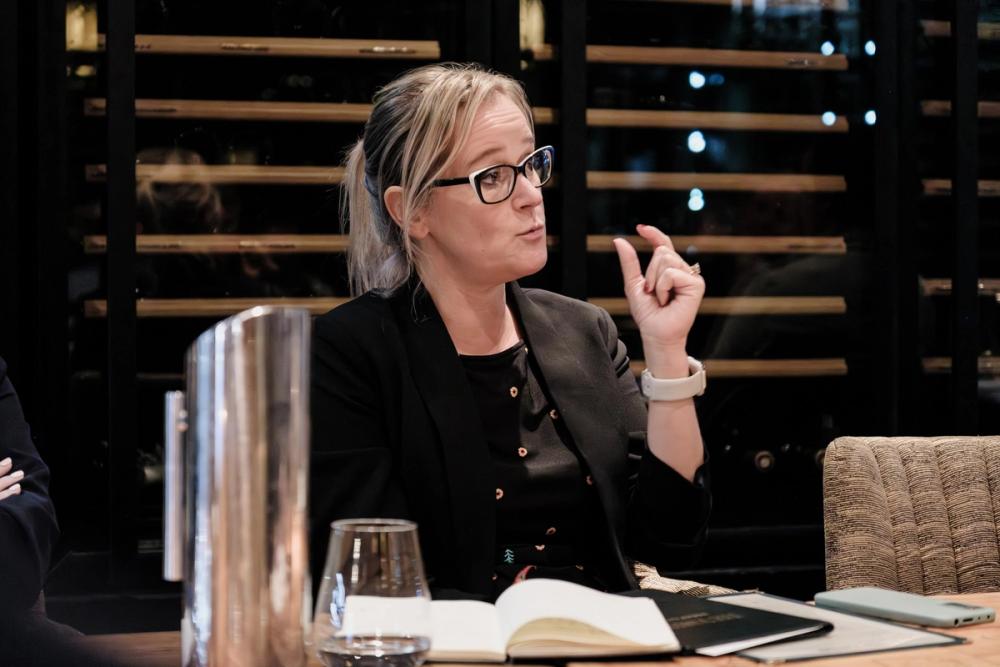
Loredana Gazzato says she is excited about the range of wines if can now offer by-the-glass at The Vintry which is part of the Fullers pub group
She explains: “Wines by the glass have always been a big part of what we do at The Vintry. It’s how we introduce guests to new styles, regions, and producers. What’s changed over the past few years is how much more dynamic and premium the offering has become. By-the-glass isn’t just about accessibility anymore - it’s about giving guests a chance to explore the full personality of our wine list, one glass at a time.”
She says the change in customer behaviour with people wanting to go out less, but then expecting and wanting a better experience when they do has really opened up the opportunity for by-the-glass sales. They want to ensure the night out is going to be a success and wine by-the-glass fits nicely into that.
She adds: “Coravin has been a game-changer. It lets us pour wines like Puligny-Montrachet and Brunello di Montalcino by the glass, which adds serious wow-factor.”
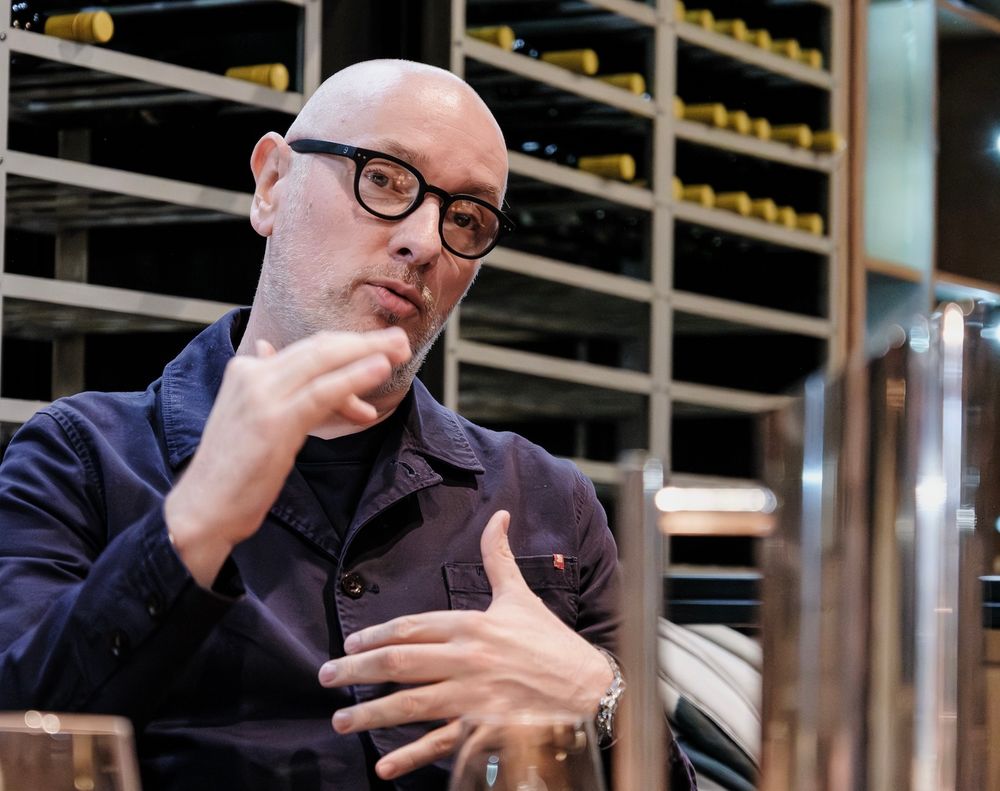
Bibendum's Andrew Ingham says by-the-glass sales are now "relevant" across all channels of the on-trade
Andrew Ingham at Bibendum says the most notable trend within wines by-the-glass is how common and accepted it is in all channels of the on-trade. Whilst a few years ago the big by-the-glass ranges would only be seen in premium outlets, now it is across the board and becoming a key part of what food-led pubs can offer.
“It is becoming ever more relevant,” he says.
James Stoddart at Hallgarten says by the glass has “never been more important” to major wine suppliers. It is critical to their brand and shows their buying prowess which is why there is much more focus on it. “There is no limit to by the glass sales now.”
He adds: “Increased costs and need to premiumise range, maximise margins and fridge spaces have all helped by the glass. Regular guests now like to see revolving and evolving changes on a wine list and by-the-glass can keep the guests interested.”
New opportunities
The debate was particularly well timed for Jeremy Lithgow MW at Amathus Drinks as it is set to open its first dedicated wine bar later this month. The project has been some time in the making and he has been putting in place an extensive and ambitious by-the-glass programme so that it can really “announce itself” onto the hospitality stage.
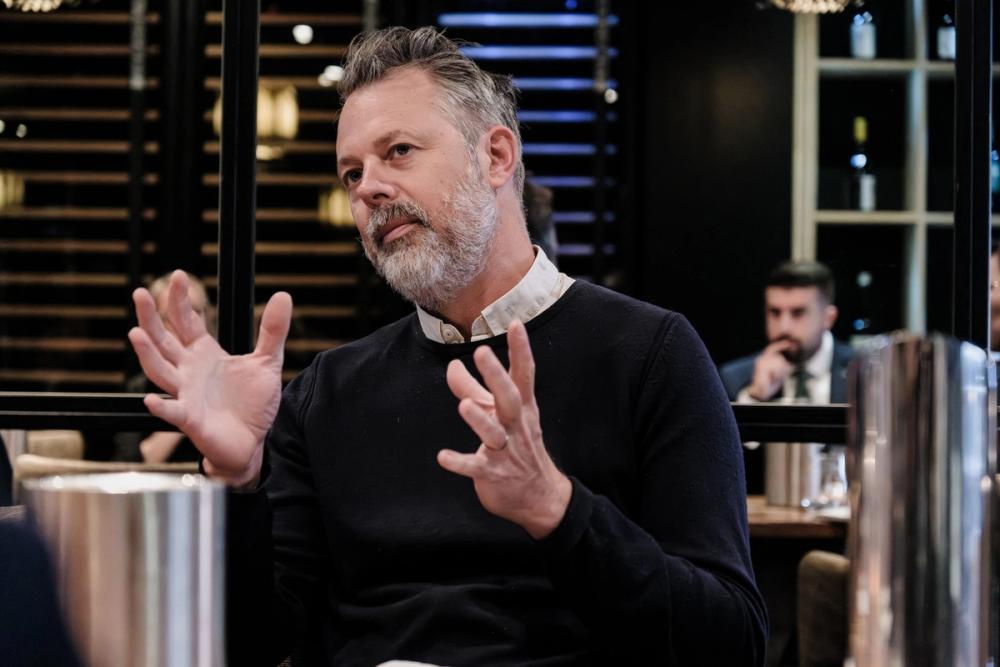
Amathus is set to open its first on-trade venue with a heavy focus on on by-the-glass sales says Jeremy Lithgow MW
From launch it will have 10 whites, 10 reds, 10 rosés and six sparkling wines by the glass including a number of left field and esoteric choices.
“We have got the technology to it and we want to make a rapid impression and make it part of what we do,” says Lithgow. “We will have to see how it goes but we see wine by-the-glass as being very important to what we can do.”
He says it has been encouraged by the fact Amathus’ restaurant clients are willing to experiment with a wider range of wines and price points”. It’s clear they see it as a way to “generate extra margin, attract clients and ntroduce more obscure wines”.
It is hoped that, if successful, the wine bar could be the first in a wider chain in the same way that Amathus has built up its retail network to now cover 15 stores in London and a growing number in key cities, such as Bath and Oxford, around the country.
By-the-glass is already a “big part of what we do” through Amathus’ wholesale offer, says Lithgow, and is a great tool for its sales team. “It certainly drives volumes for us and gives our customers a chance to experiment with a selection of wines.”
The fact Lithgow and Amathus are putting so much focus on wines by-the-glass from day one is typical of good operators now in the premium on-trade, says Ingham. It shows how serious they take their wine and the care and attention that goes into their food offer too. It has become a “key pillar in the identity of a good venue,” he says.
It’s why we are seeing so much interest in more regional and specialist cuisine with much more focus on food coming from very specific places in the mid-premium sector. This goes hand-in-hand with having an interesting and diverse by-the-glass wine list.
Having a good by-the-glass list can help attract those curious food and drink guests.
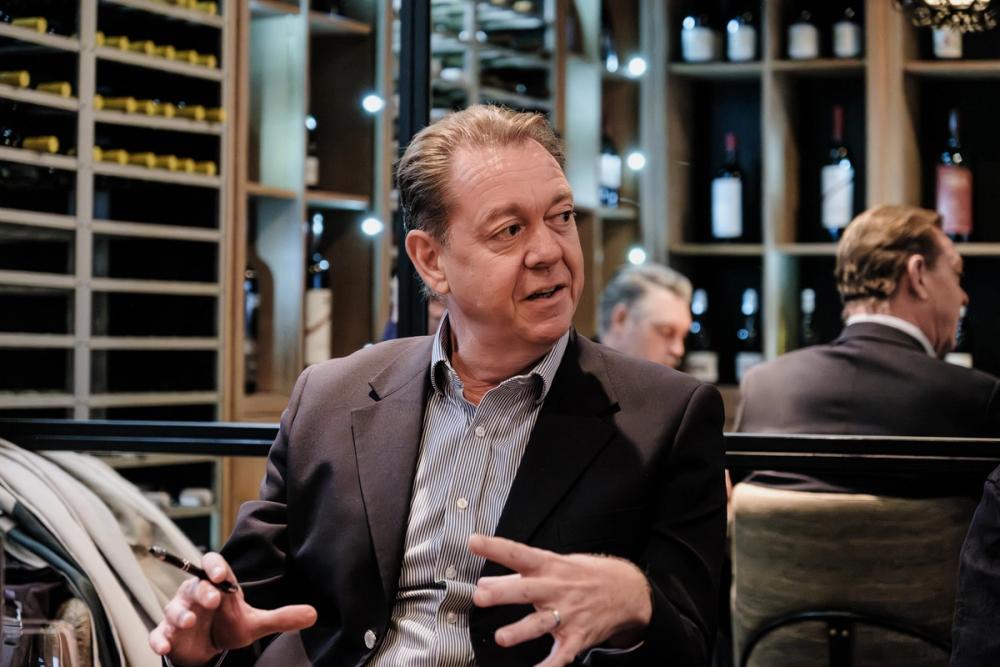
Jeroboams' Simon Watson says having the the retail stores help assess which wines will work by-the-glass in the on-trade
“It also helps tell stories,” says Simon Watson at Jeroboams that has seen a big increase in its by-the-glass sales through its trade division and allowed it introduce more wines to the on-trade.
Its buyers, he adds, are constantly looking to bring new wines to the market and by-the-glass is a great way of introducing them.
"We can definitely see better quality wines on offer along with elevated prices per glass to match,” he says. “These are not just inflationary increases; these are genuinely reflecting the better quality and diversity of wine being offered.”
Having the retail side of the business also allows it “to trial and gain feedback from customers in real time and pass the benefit of our experience onto our on-trade customers”.
“It also makes a big difference to our sales teams when they are out on the road and can take out samples for customers to try. It opens up more of the portfolio and generates excitement.”
Braver choices
One of the key findings from both The Buyer and Coravin’s trade’s research and its consumer study was the desire from customers to see more ambitious wines available by the glass and their willingness to explore and try a wine they might not risk buying as a whole bottle.
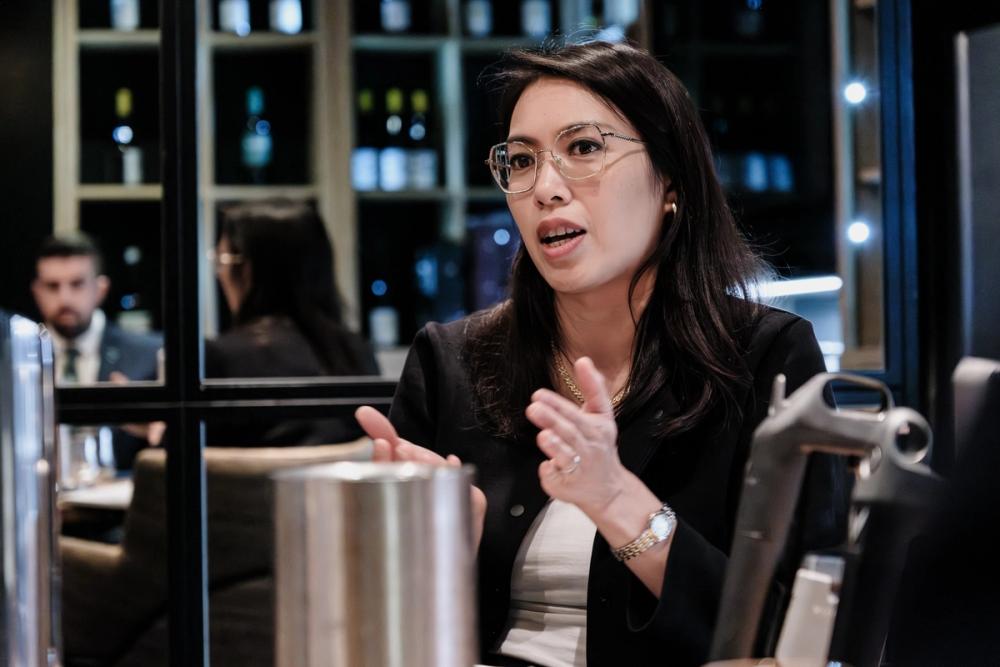
Indigo's Regine Lee says it has seen a big rise in interest from restaurants to sell more esoteric wines by-the-glass
That certainly rings true to Regine Lee at Indigo Wine that has seen a big increase in demand for its more esoteric range of wines for by-the-glass sales.
“It has allowed us to have a closer communication with our trade customers and helps them build up an order with us,” she says. “It provides a point of difference for the more specialist restaurants and allows them to really hone in on the DNA of a restaurant. There is a lot more regional focus in cuisine now and specialist food available and there is the chance to have more by-the-glass pairings. It can really make an impact.”
It is the same for Lithgow at Amathus who says it has seen an “uplift in by the glass for countries and regions such as Greece, Armenia, Azores and Turkey”.
Offering a more left field wine by-the-glass can also help trade up customers to buy a bottle if they like what they taste, says Gazzato.
“It enables us to energise our customers and make new discoveries,” adds Clark.
Securing by-the-glass listings are now so important for major wine suppliers that they are willing to offer Coravin and other wine preservation systems to their on-trade customers for free as they will soon pay their way in terms of volumes of wine they can sell through their venues, saysIngham.
“We are encouraging our customers to work with preservation systems to help take them to a more premium level. It is helping food led pubs give their customers a unique experience.”
He adds: “When we put a proposal together for a customer we look at how we can support them and creating that customer experience is critical which is why we are seeing such a better penetration of by-the-glass and preservation systems.”
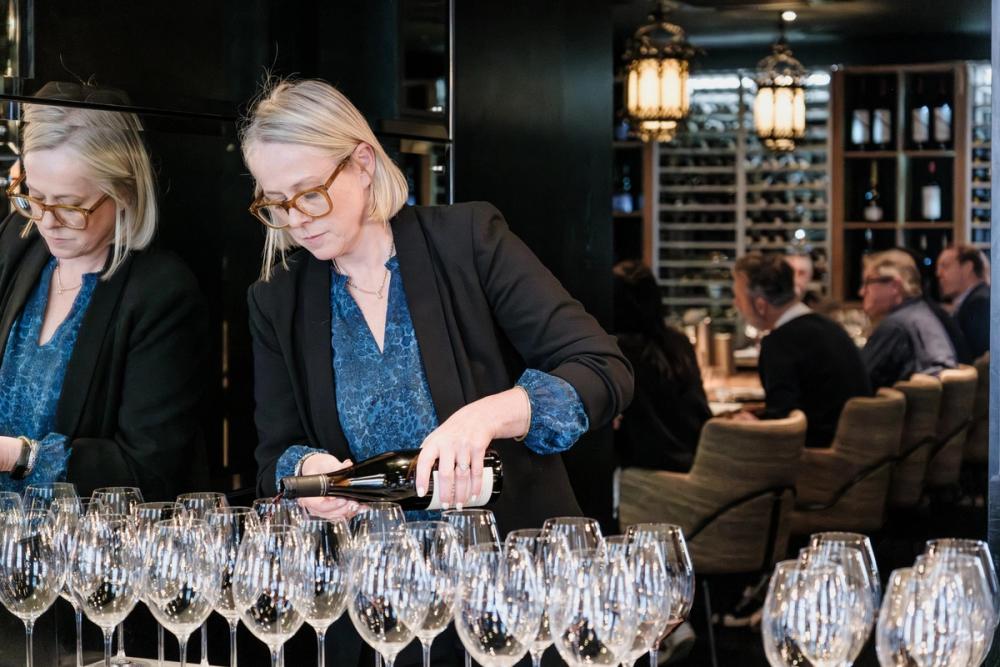
The panel had the chance to blind taste and compare a selection of wines that were poured by bottle and by Coravin
There are, though, stresses Ingham, still quite strong regional differences and the by-the-glass range is going to be different in a pub in London to one in Stoke.
“There is still education to be done and not all consumers know what a wine preservation system is and does. So we need to keep on explaining that. But customers are changing all the time and by-the-glass just gives them so many more options.”
Whilst discovery and trying out new wines is also part of Mitchells & Butlers by-the-glass approach it has to balance that with the need to make sure it still has the big hitters covering the main grape varieties on the menu - particularly Pinot Grigio, Argentine Malbec and New Zealand Sauvignon Blanc, says Clark.
But offering more premium and quantity wines by-the-glass is also important in keeping customers in the wine category, he claims. It means you are not losing them to cocktails or premium spirits if they only offered a standard and boring by-the-glass range. If the wine offer is not serving them what they want, they will go elsewhere.
“By-the-glass is a gateway into wine,” stresses Clark.
Watson says there are now far more sparkling wines being offered by-the-glass thanks to the new preservation options available - including Coravin’s system for sparkling wines that says it can keep sparkling wines fresh to pour for up to four weeks.
The fine wine opportunity
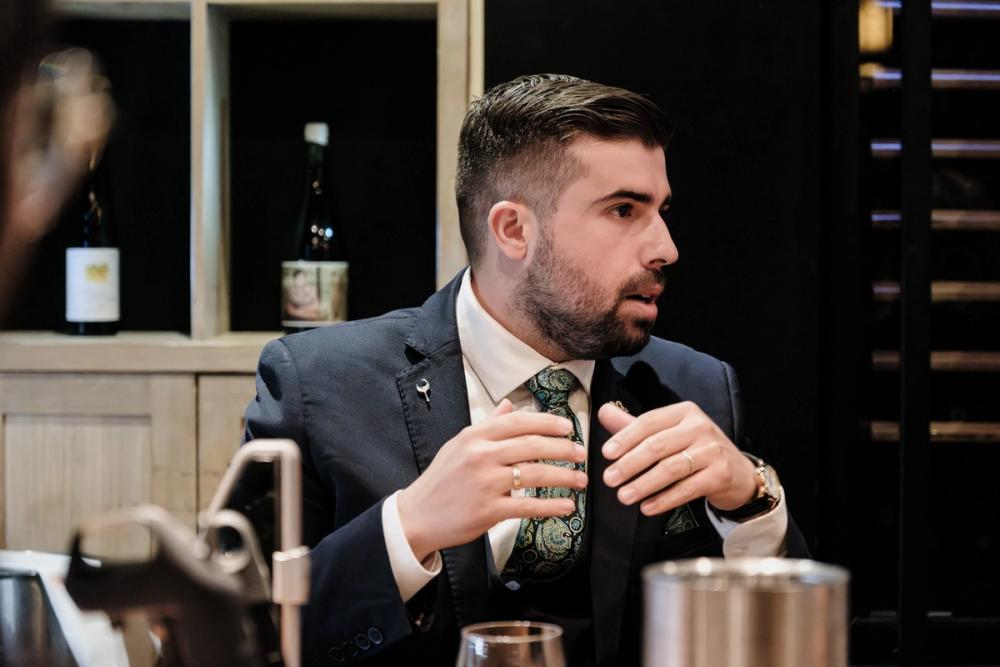
Fabio Monteiro, head sommelier at Gordon Ramsay's 1890 restaurant, says Coravin has been a "game changer" for fine dining and selling fine wines by-the-glass
Coravin’s impact in the fine dining sector has been so fundamental that you could describe it as fine dining in the pre-Coravin and post-Coravin days. None more so than within the Gordon Ramsay group where Giuseppe D’Aniello and his team at 1890 have full embraced wines by-the -glass.
Fabio Monteiro, head sommelier, says thanks to Coravin wines by-the-glass is now embedded in the whole gastronomic experience and it has opened up so many more possibilities to engage with its guests.
“It allows us as a restaurant with one Michelin Star to give the opportunity for the guest to experience and not be afraid to taste a glass of a premium wine that is in perfect condition. Five years ago you would open a bottle and be lucky to be able to sell the rest of the bottle in a couple of days,” he says. “Now on high-end wines, the risk[of wastage] is close to zero.”
There are few restaurants as committed to wines by-the-glass than the team at 1890 and it will offer almost any bottle for a guest to try by Coravin. It even has a bottle of Madeira from 1755 that it offers by the glass and is using Coravin’s sparkling system to now offer four sparkling wines by- the-glass.
“The invention of Coravin was a huge game changer. We can pour a customer something using Coravin that they would normally never taste. If it does not work on the by-the-glass selection, we can always rotate on a wine pairing.”
The seemingly limitless opportunities for fine wines by-the-glass, particularly for tasting menus, has opened up so many more possibilities for fine wine and premium wine merchants, says Felipe Carvallo at Flint Wines.
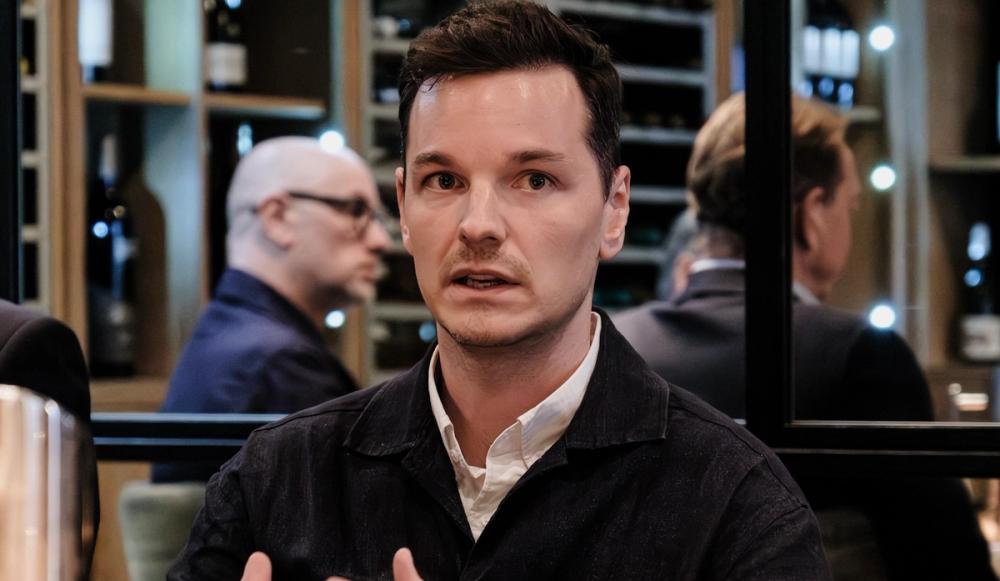
Felipe Carvallo at Flint Wines says it now has to think far more gastronomically when suggesting wines for by-the-glass in fine dining restaurants
Particularly for parts of the fine wine world that might currently be struggling for bottle sales and listings. He says it has been very fruitful, for example, for certain Burgundy villages having those wines on a list by-the-glass can help grow the awareness for those regions and styles and the confidence of restaurants to sell them, he adds.
But you also need to be on the front foot and really understand not just the palates and needs of the sommelier team, but to be also in tune with the chefs and whole menu development process to see where your wines and producers might fit in, says Carvallo.
You need to take more of a gastronomic approach and be thinking of ingredients in dishes and on tasting menus and which of your wines might work, he adds.
Monteiro says he is very open to pairing ideas from his suppliers. It can just be a simple What’s App message, or text rather than a full blown tasting meeting.
“I like it when they bring me a wine which, as a sommelier, would probably not be a priority and suggest it for the list. A perfect example is a Cinsault from Pedro Parra in Itata, Chile.”
Gazzato says she would like to see smaller formats for premium wines which in turn means less waste and more flexibility for her team. She also urges suppliers to provide more “quick-fire training tools for the team” and stories and tasting notes that are easy to share with guests.
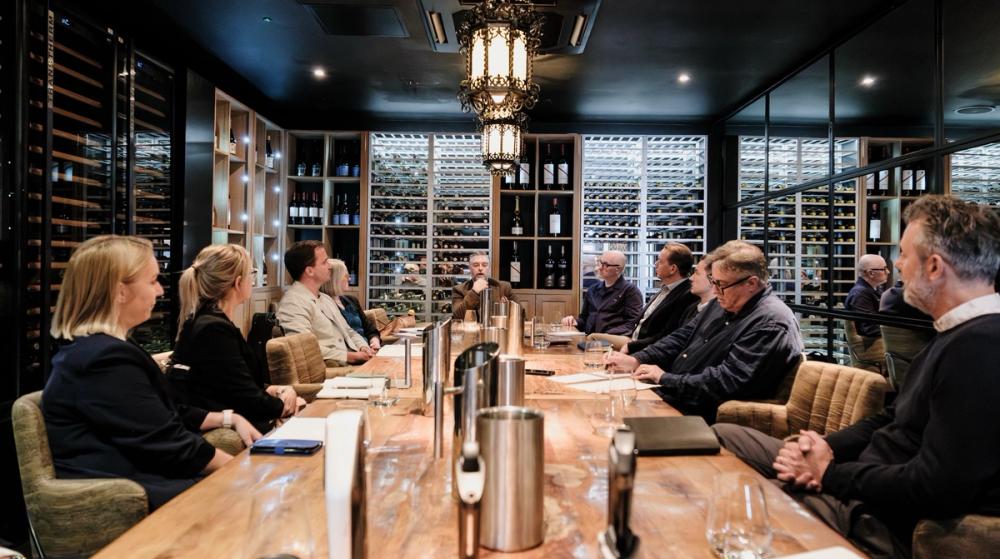
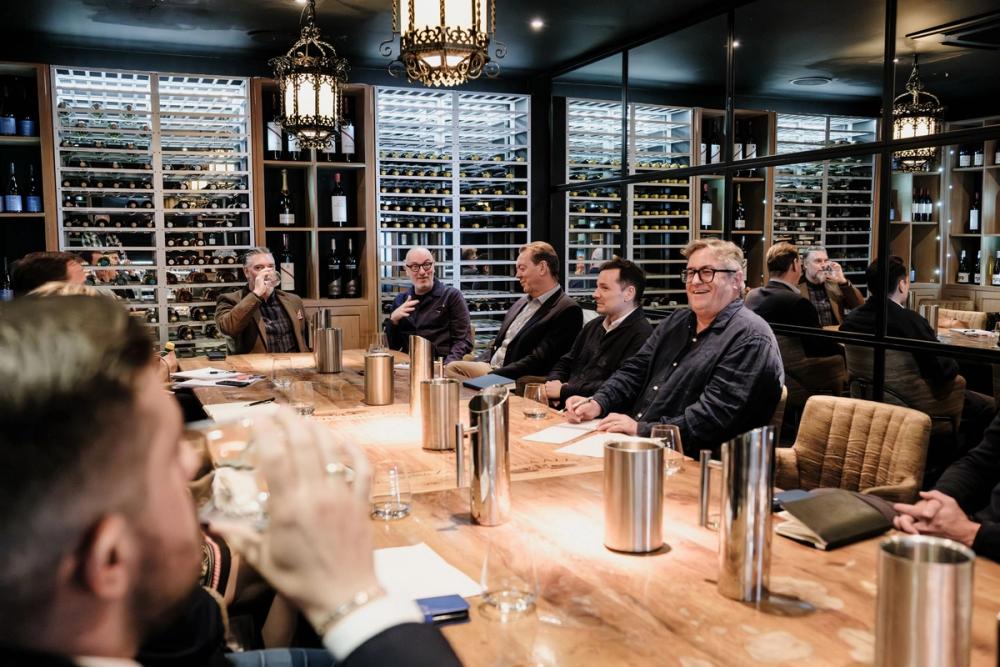
Coping with duty
One of the other clear figures to emerge from The Buyer and Coravin survey was the impact the new ABV-driven alcohol duty system is having on wines by-the-glass, with 25% of those surveyed saying it has had a significant impact and 37.5% saying it has had an impact on their decision making.
If there can be any upside to the new ABV-driven duty system then it means the increased margins you can get from by-the-glass sales makes them even more commercially important, says Clark.
Clark also hopes it will further cement the on-trade and hospitality’s argument to the government that it should be exempt from the new EPR (Extended Producer Responsibility) regulations. The very fact these are bottles that are being split up to served by-the-glass and enjoyed in-house means they are in no way meant for domestic use, he stresses.
Help with pricing
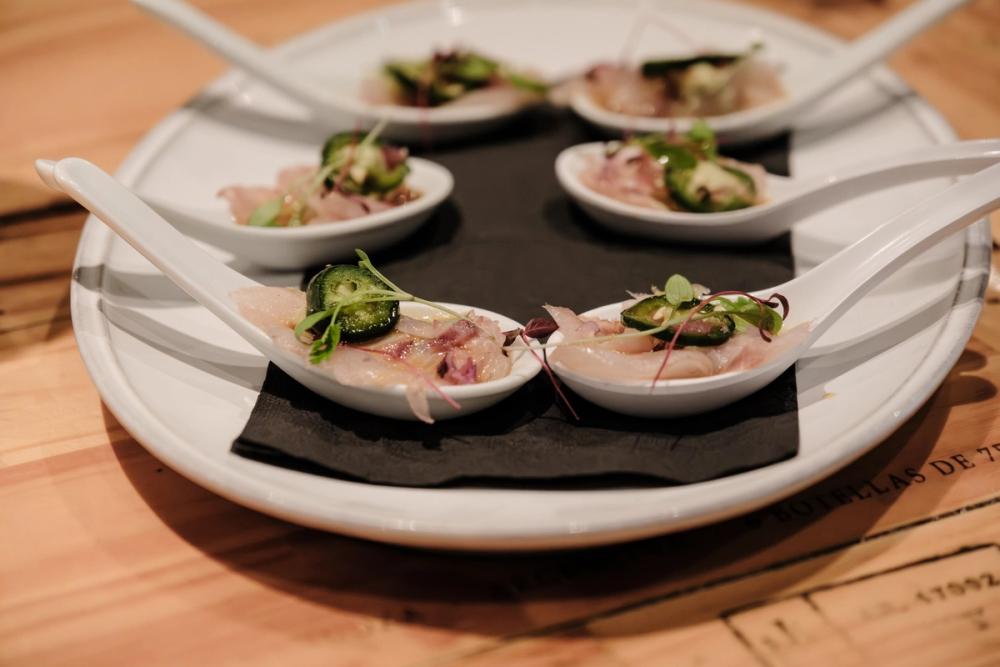
The panel was able to assess different wines served by-the-glass by bottle and under Coravin and pair with different Gaucho dishes
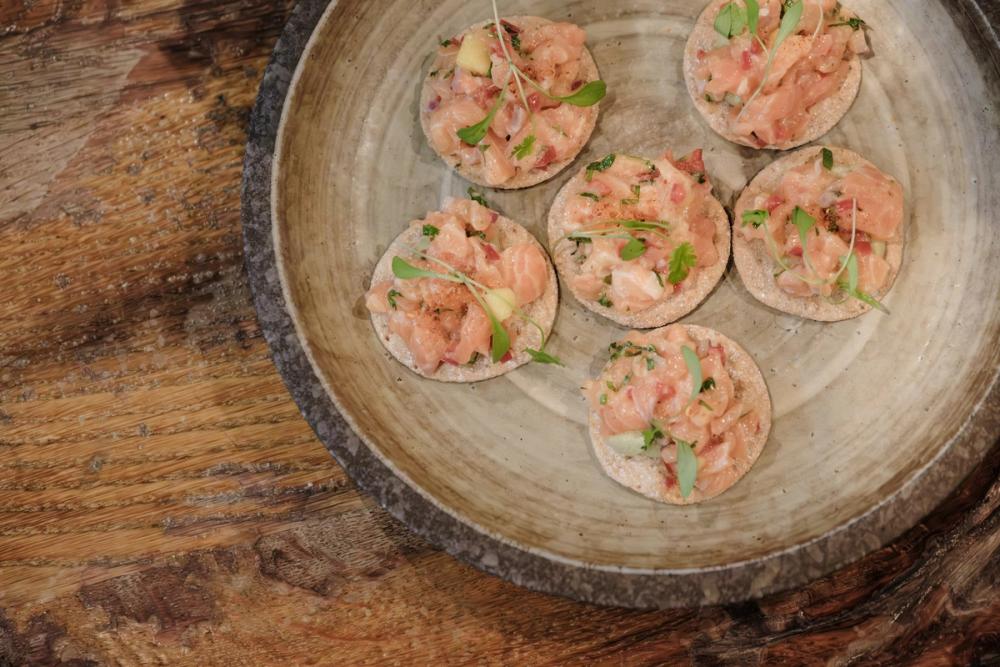
There was also for a long time a “psychological” £10 barrier when it came to wines by-the-glass, and a lot of venues wouldn’t take a wine if it needed to be listed at a higher price, says Lithgow. The changes in duty, and cost of goods, has “smashed” that price ceiling and got more consumers used to a higher level of pricing, he adds.
He explains: “The previous £10 a bottle ex VAT upper limit which previously existed for many clients has shifted upwards due to cost of goods and various taxes, and in some ways this has freed up clients’ ambitions. Increasingly we’re seeing buyers take a chance on premium selections.”
Gazzato says the sweet spot for The Vintry is still around £10–£14 “but we’re seeing more guests willing to spend £15+ for a glass if the wine has a story, be it a rare grape, a biodynamic producer, or a region they’ve never tried”.She adds: “It’s less about price now and more about experience.”
It is also now far harder to provide real quality in that £6-£10 by the glass spot in the UK, says Lee at Indigo Wines.
By-the-glass has also helped offer choice when there have been such big increases in the average price of a bottle in a restaurant, says Flint’s Carvallo.
Hoddart agrees and says it’s why we are seeing more 125ml glasses now being offered as it helps “avoid bill shock”.
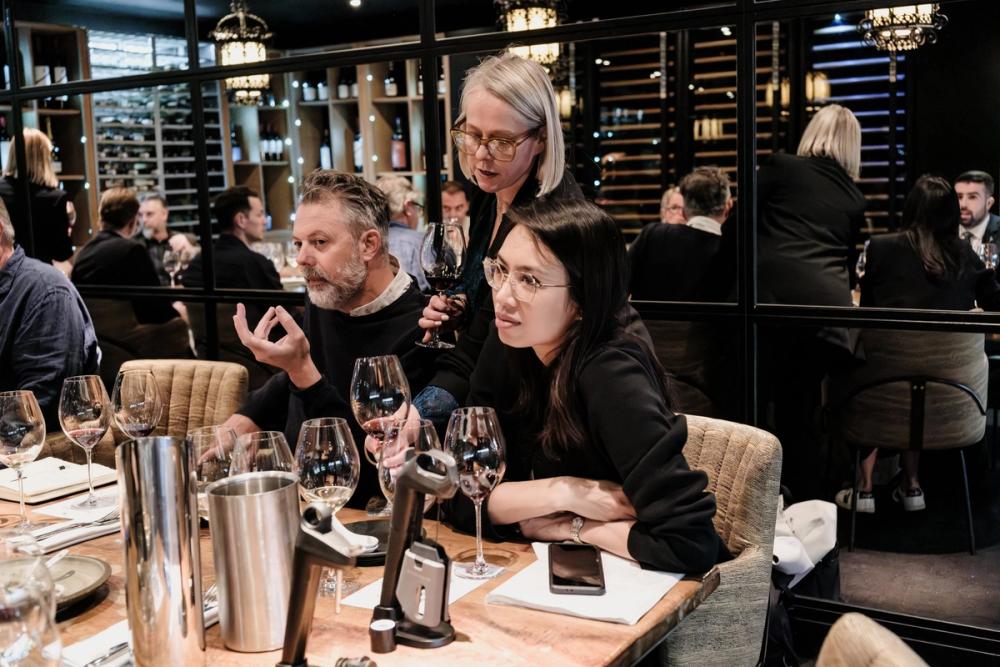
The panel of buyers were able to share their experiences of working with wine by-the-glass
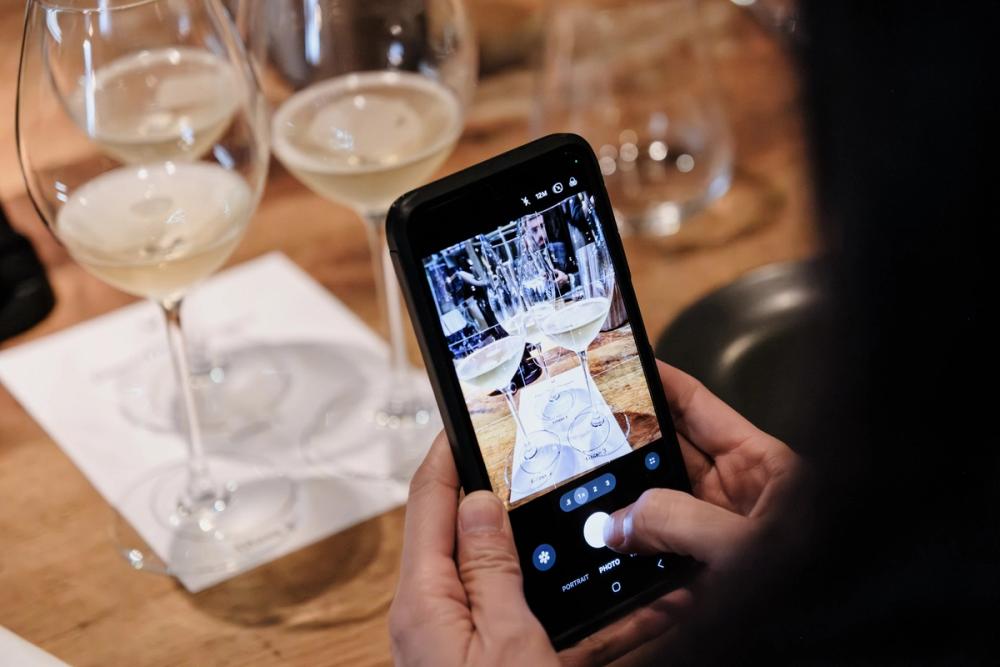
Lithgow says people may now start with a glass of wine and then trade up to a bottle as the evening goes on.
Gazzato agrees and says trading people up from a glass to a bottle is now a big opportunity.
Clark says we have seen those offers in the trade where if you buy two glasses you can get the full bottle which work really well.
Upwards and onwards
As hospitality continues to struggle in face of so many headwinds outside of its control restaurants, pubs and bars need to capitalise on any opportunity to get people coming into their venues. Wines by-the-glass have not only increased in popularity but they have become a strategically important way for operators do that - and increase margins and profits at the same time.
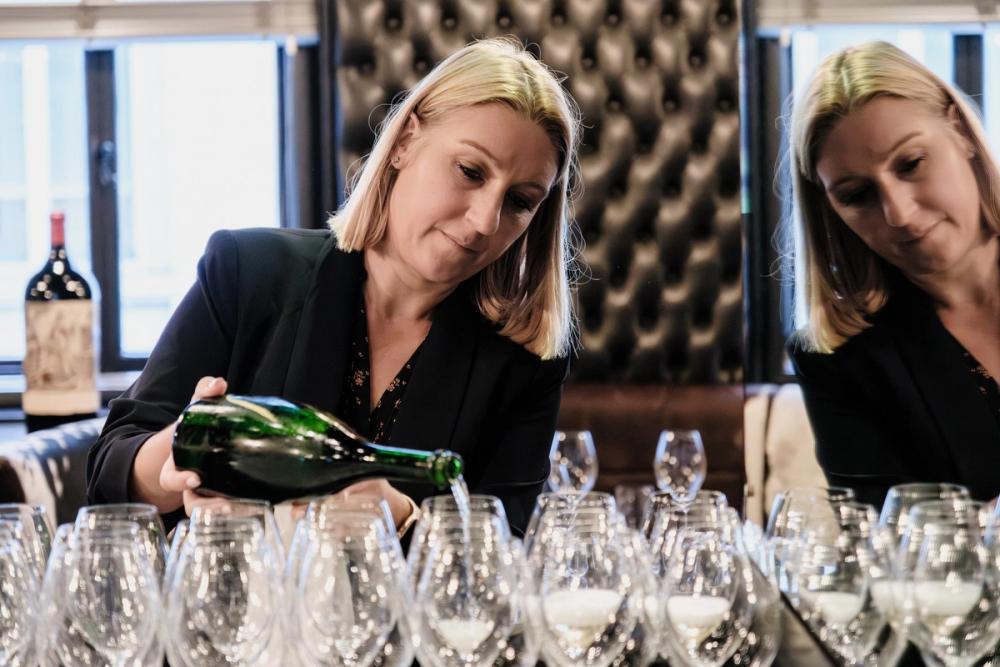
Coravin's Anne Roque says it is learning all the time from all its customers and hopes its new Corvin Guide will help elevate and promote the role that wines by-the-glass have in the premium on-trade
Anne Roque at Coravin says it is fascinating to see through the work that Coravin does how far the sector is learning all the time about how to improve and develop wines by-the-glass.
“Every few months we understand more about how our systems are being used that we did not know before. It’s an exciting position to be in,” she says.
It’s why it is so excited to have launched the online Coravin Guide which in the coming months will grow and expand to feature restaurants and their by-the-glass menus in cities all over the world, and provide a platform for sommeliers and buyers to share their by-the-glass lists andassociated experiences.
Its recent study of over 2,000 consumers shows how fast the market is changing and the opportunities there are for the sector as a whole to listen and learn and grow the opportunity further.
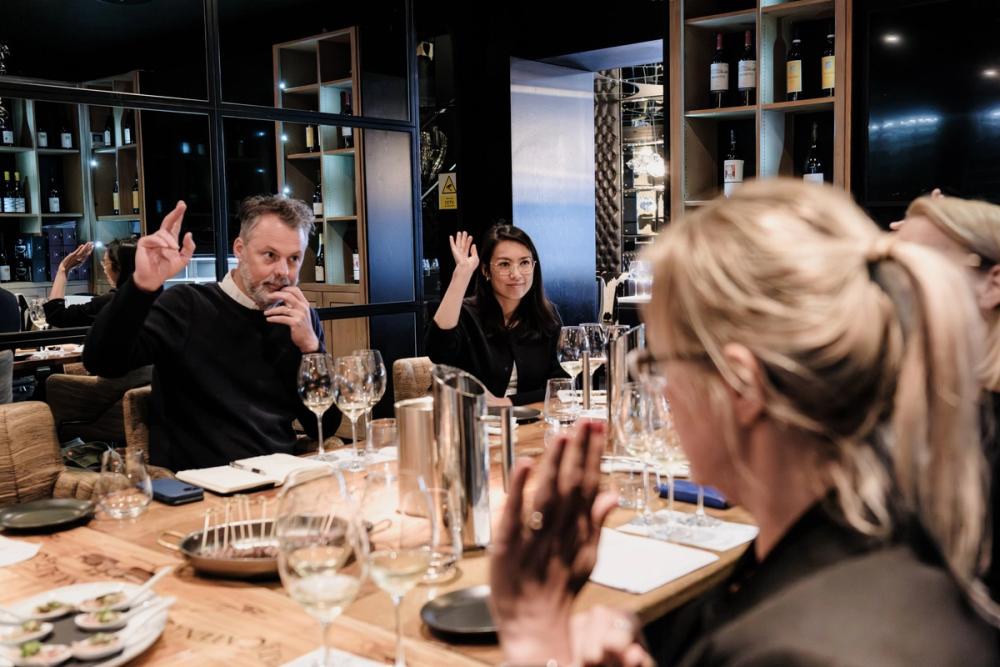
Putting wines by-the-glass to the taste test...
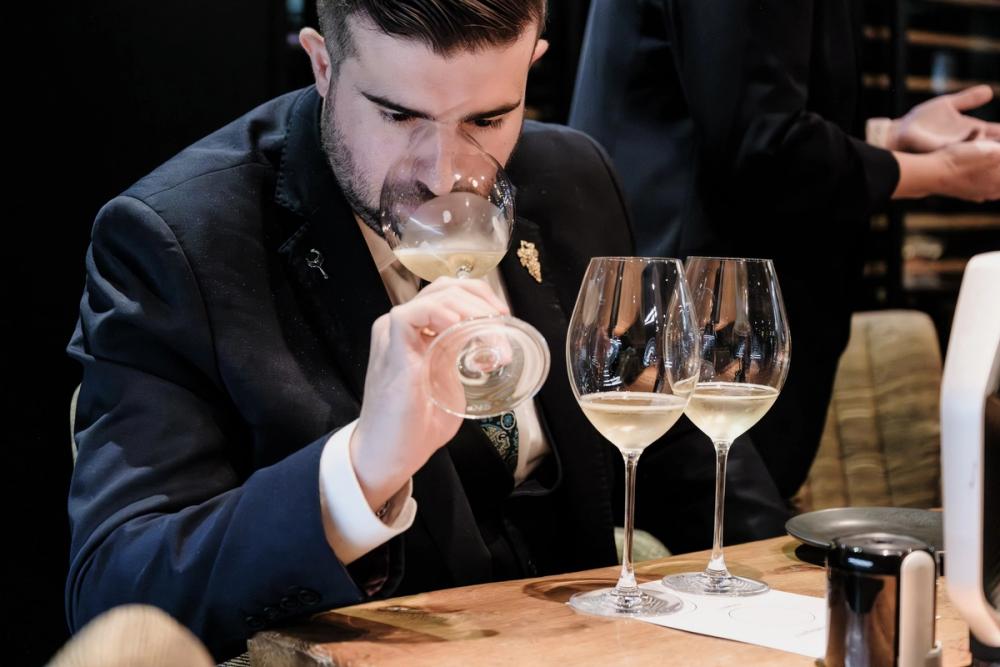
Clark at Mitchells & Butlers agrees: “The market is there and the volume is there and it is opening up all the time.”
Monteiro says sommeliers and fine dining restaurants have a lot to thank Coravin for.
“It has been a game changing preservation system, which allows to be much more creative when building a by-the-glass selection as well with the wine pairings. We can now create an out of this world wine pairing without the fear of wasting any wine, therefore bringing more revenue to the restaurant,” he says.
The final word goes to Gazzato: “By the glass is how we connect guests to our wine list - it’s not just about selling wine, it’s about storytelling. At The Vintry, it’s become a way to turn a casual glass into a memorable experience. The more support we get from suppliers and tech partners, the more exciting that journey becomes."
- You can find out more about Coravin and the systems it provides at its website here.
- You can check out the new Coravin Guide and its platform dedicated to by-the-glass sales by clicking here.
- Thanks to the team at Gaucho Piccadilly for hosting the debate.
